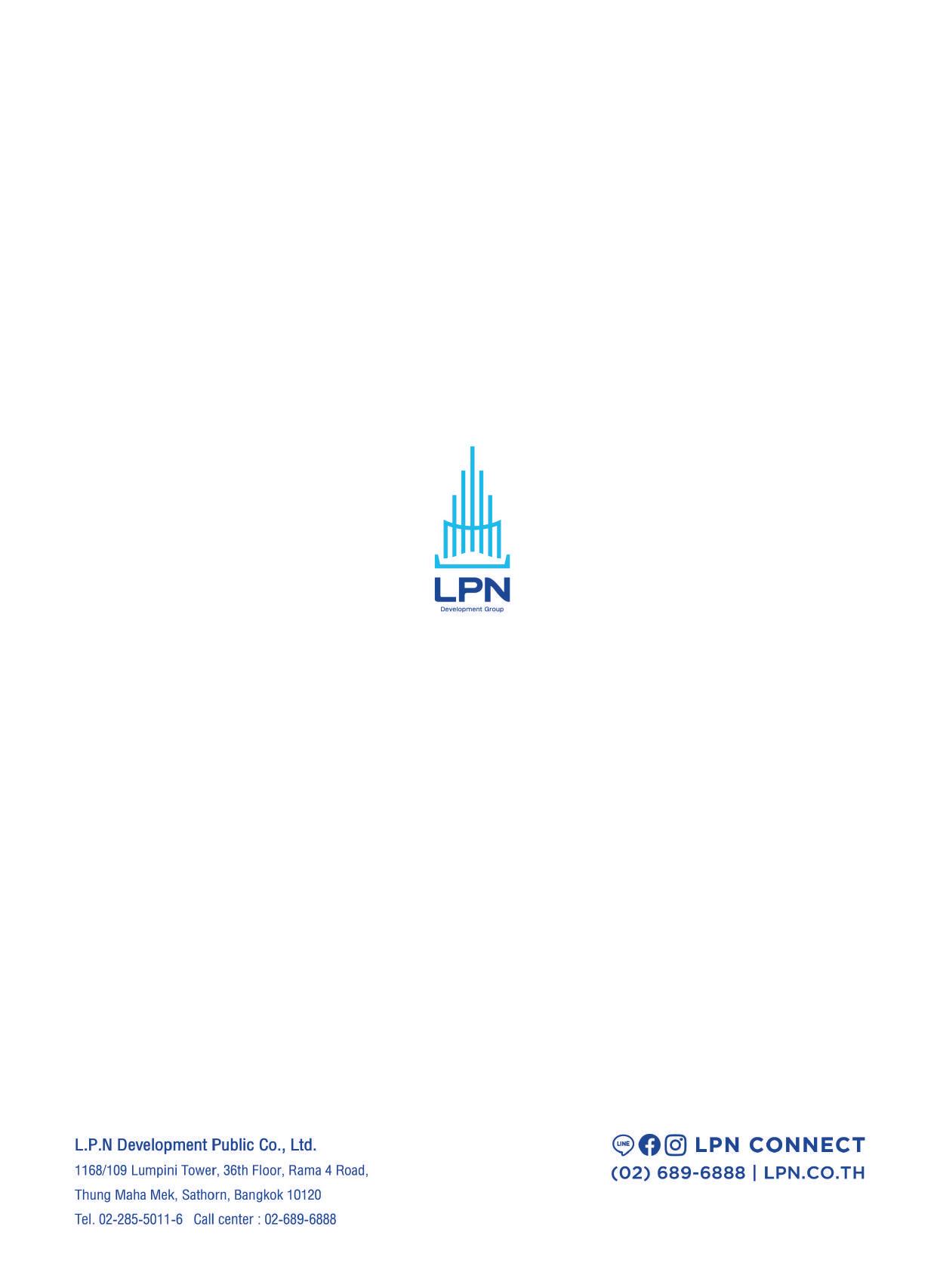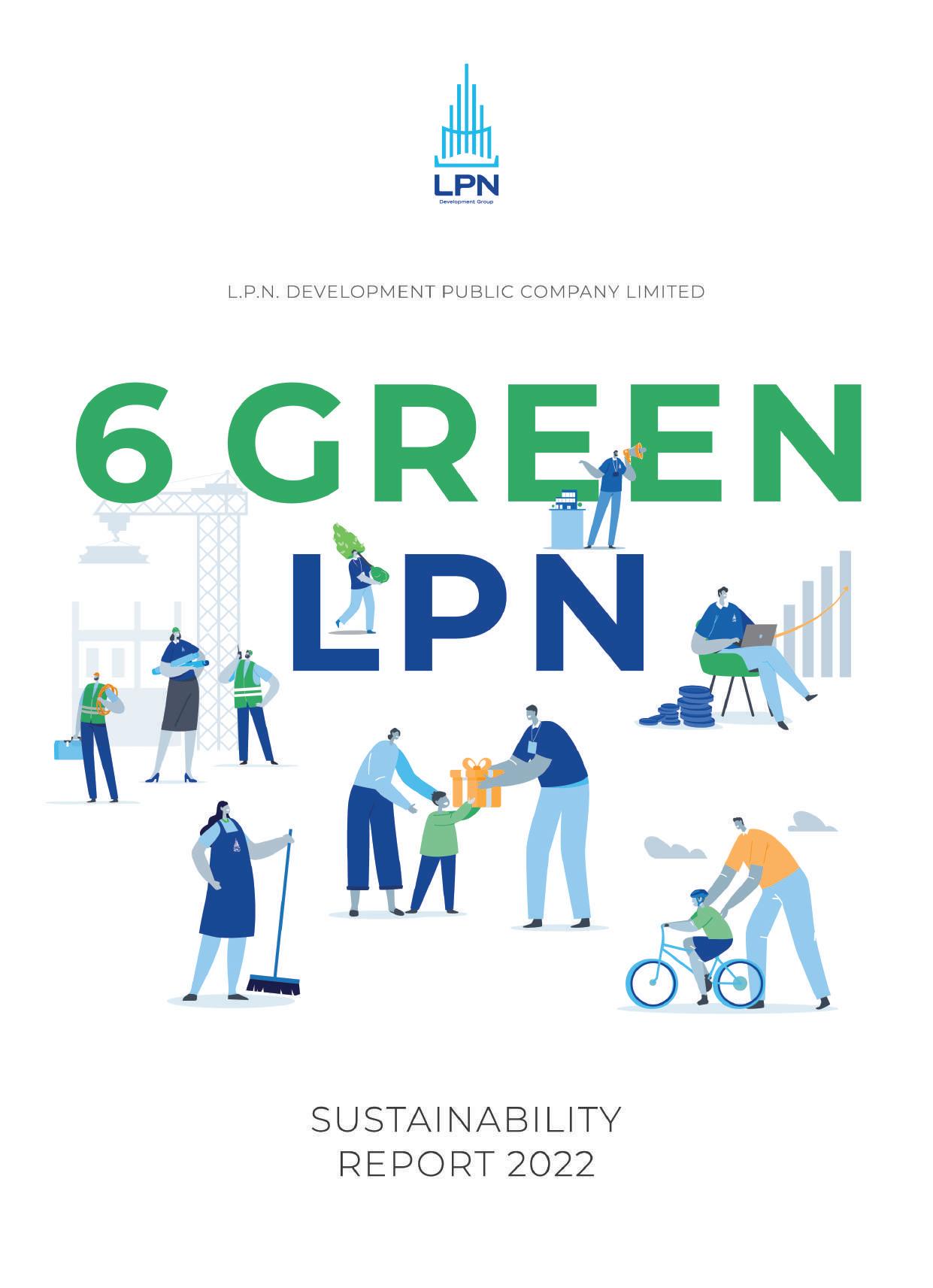

6 GREEN LPN TRANSFORM FOR BETTER LIVING
• MESSAGE FROM CHAIRMAN
• VISION & MISSION FOR SUSTAINABLE GROWTH
• LPN WAY: MOVING THE ORGANIZATION TOWARDS SUSTAINABILITY
• OUTSTANDING OPERATION PERFORMANCE
• DEVELOPMENT BUSINESS STRATEGY MAP 2023
• AWARDS OF PRIDE
• SUSTAINABLE DEVELOPMENT GOALS
•
•
• LPC SOCIAL ENTERPRISE
• LPN ACADEMY
• INNOVATION
• ABOUT L.P.N.
• STAKEHOLDER ENGAGEMENT & MATERIALITY ANALYSIS
• ABOUT THIS
•
•
MESSAGE FROM THE CHAIRMAN
Dear all Shareholders,
In 2022, the global economy has entered into recessions due to multiple crises. This included the crisis caused by the pandemic of coronavirus disease 2019 (COVID-19), which dynamically spread in a wide area. Although, the situations have improved when compared to 2020-2021, the crisis still has impact on the growth of global economy. The situation was worsened by geopolitical tensions of the Russia and Ukraine war which imposed direct impact on economic drive due to the fact that Russia is a strategic global energy source. As a result, energy costs have risen which pushed the overall inflations and led to slow down in global economy. The World Bank has predicted that, in 2022, the world economy would grow only by 2.9 percent, when compared to a prior forecast of 4.1 percent.
The above-mentioned volatility of global economy had an adverse effect on the Thai economy which grew only 3.2 percent in 2022 which was lower than the previous forecasts of 3.5-4.5 percent projected by the Bank of Thailand and the National Economic and Social Development Council. Meanwhile, Thailand’s inflation rate rose to 6.08 percent which was the highest level in 24 years. Under such circumstances, the United Nations and the National Economic and Social Development Council have applied concepts of sustainable economic development in 3 dimensions, consisting of Bioeconomy, Circular Economy, and Green Economy, collectively known as BCGEconomy, as guideline to drive the global economy and the Thai economy.
The three-dimensional economic development approach is one of the United Nations’ sustainable economic development policies and is included in the 2021 - 2027 national economic and social development plan. The approach is in line with sustainable real estate development guidelines which has been adhered and adopted by L.P.N. Development Public Company Limited (LPN) in business operations continuously for 33 years. The Company has developed projects and managed organization under the concept of Sustainable Organization by applying the concept
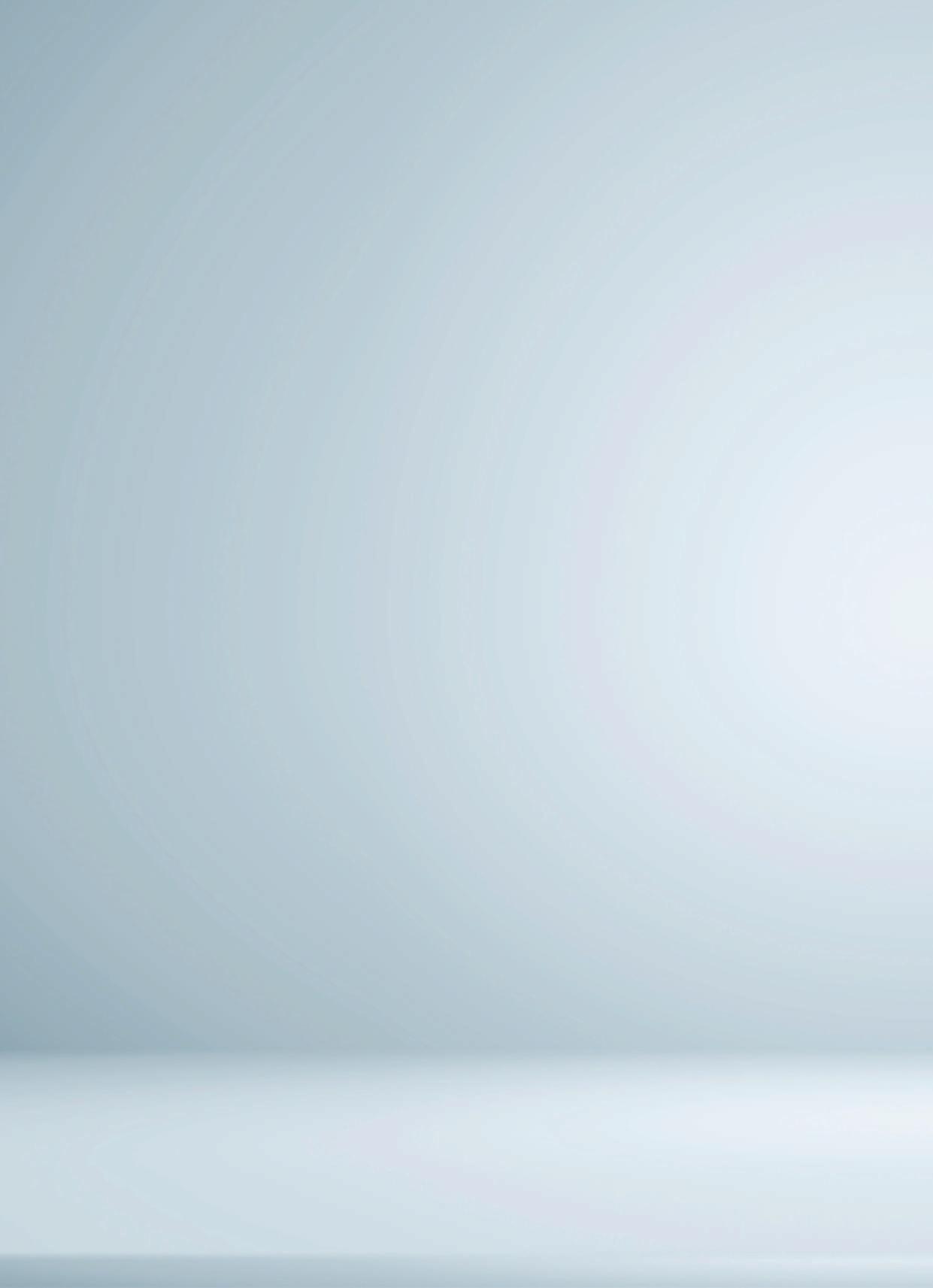
of Eco-design & Zero-Waste, promoting Reuse, Refurbish, Sharing and placing emphasis on management of waste from construction process and recycling and upcycling process, taking into account the SP concept, consisting of Profit, People, Planet.
Profit: Improve internal work processes in a concrete manner, reduce costs, streamline procedures, and increase work efficiency in order to balance returns on continuous operations based on good corporate governance, transparency and auditability.
People: F oster and develop potential to create growth opportunities for employees, involvement in supporting and helping the communities, taking into account all groups of stakeholders.
Planet: Adopt knowledge gained from being a real estate developer to set quantitative goals and guidelines for reducing greenhouse gas emissions, to be a part in solving climate change problems and driving Thailand towards a low-carbon society. This is an environmental crisis that requires significant cooperation from all sectors.
Although, 2022 was another challenging year in both economic and environmental dimensions, with cooperation of all executives and employees as well as great support from all partners and related sectors, the path of LPN’s business throughout the past year has been overwhelmed with our determinations to overcome all obstacles and innovative power. Therefore, I would like to thank all of you who are the driving forces and sustain our intention to create a “livable home” in order to deliver the true living happiness to every family, as well as placing emphasis on environmental and social responsibility. These will lead to sustainable growth for the organization and all groups of stakeholders.
The path of LPN’s business throughout the past year has been overwhelmed with our determinations to overcome all obstacles and innovative power. Therefore, I would like to thank all of you who are the driving forces and sustain our intention to create a “livable home”.

Chairman of the Board
(Amornsak Noparumpa)
SUSTAINABILITY GOALS
In order to drive the Company’s business operations toward the goal of sustainability in all dimensions, the Board of Directors will consider and approve the visions, missions, strategies and business plans of the Company, subsidiaries and affiliates which must be appropriate and consistent with the current situation and future expectations. In 2022, the Thai economy was affected by stagnant global economy, the Company therefore adjusted its strategies to cope with the situations by reorganizing its internal structure and establishing 5-year strategic plan for 2022-2026 to determine growth targets for revenues and profits through effective cost management.
SUSTAINABLE DEVELOPMENT
Vision for 2023-2026
Enhance operating results in the financial aspect by maintaining balance and accountability towards stakeholders for sustainability.
Commitments to Stakeholders
Shareholders Staffs Customers LPN Team
Enhance operating results in the financial aspect under risk management and good governance.
Develop staff potential to be equipped with skills, knowledge and work with responsibilities.
Create valuable, quality and caring “livable” society.
Jointly develop work processes for business advancement and growth.
Neighbors Residents Labors Environment
Responsible, remedy and handle impacts from operations, including promote engagement and good relationship.
Deliver “Real Pleasure of Living” under “Livable Home” strategy with affordable prices for all customer groups.
Maintain quality of life, safety and occupational health through supporting alliances’ operations.
Operate the business in a responsible manner for all stakeholders in accordance with 6 GREEN LPN concept to achieve sustainable development.
LPN WAY: Moving the organization towards sustainability
LPN Way comprises two milestone values i.e. “continuous development” and “respect for stakeholders”. The seven components of the values are “C-L-A-S-S-I-C” which is integrated into the operation of the Company and is adhered to by all segments of the Company. It has been developed into the organization values (LPN Values) and LPN Way with an aim to achieve the goal of the operation both in terms of quality and quantity and to drive the Company towards “Sustainable Development”.

C-L-A-S-S-I-C CORE COMPETENCY














LTHINKING





CONTINUOUS DEVELOPMENT

GOVERNANCE






SPEED WITH QUALITY

S S MINDED


CORPORATE VALUES




Competency)
The focus on the development of the working and problemsolving process that is quick and attentive to details for the quality of the work and the completion before deadline to be one step ahead of others.
The project management which realizes the importance of the careful utilization of resources and the efficiency of project management which focuses on the reduction of direct costs and hidden costs as well as the reduction of extra expenses in all departments without affecting the planned target and quality.
The new way of thinking that is flexible and different without any fear of obstacles in order to improve, change, develop and create new products and services. The implementation and assessment of the new process must be possible. The aim is to add value to the products and services as well as the growth of the organization.
The way of treating long-time and trustworthy business alliances with trust and fairness with the willingness to collaborate and develop the work continuously as if being in the same organization for the achievement of a common goal.
S I C
The care for all groups of customers at all times by putting ourselves in their shoes and showing willingness and enthusiasm to provide full services that exceed their expectations in order to add value to services and create good impression.
The action towards the organization and related business partners which is honest, responsible, transparent, fair and ethical at all times.
The sense of collaboration from staff at all levels in the operation or activity of the Company for the achievement of the common goal.
PERFORMANCE
The total of projects is launched.
The Company manages communities. 142
123,500 families and 220,000 community members. The total space managed is 6,949,000 sq.m.
PERFORMANCE
LPN Academy sets annual targets of training hours per person.
56
8,485,832
The Company supports the budget of for development and training staffs. THB
1,482 underprivileged women. The Company helps create jobs for the total of
DEVELOPMENT BUSINESS STRATEGY MAP 2023
FINANCIAL
Sustainability
CUSTOMER
Create Value for our customers: to meet and beyond their needs, demands, and expectations through products and services
INTERNAL
Decision are made on the basic of best available Information and a culture of continuous improvement and commitment to the consequences.
Increase sales revenue and backlog
Achieve a positive financial position
Manage dept liabilities and liquidity
Our communities’ and residents’ outcomes are “Pride to belong”.
Value for money, quality and care
Enhance Brand Experience
Deliver a quality living and society
Develop and embed ESG goals into our operating process and structure to sustain our business
ORGANIZATIONAL CAPABILITIES
Human Capital
Engaged & Empowered Workforce
Our staff are proficient, capable, compassionate and committed to delivery the best result.
Our organizational structure and systems support the delivery of outstanding outcomes and responsive to impact of change.
Develop talented, empowered and accountable workforce
Strengthen staff communication and engagement
Develop a culture of self learning, and continuous improvement
• Develop systematic thinking and result-oriented skills
Information Capital
Consequence & Data-driven Based
Promote enquiry and research to develop, share and apply new knowledge
Develop IT capability for better accessing, understanding and evaluation of information
Promote objective-drive and cost-benefit decision making
Organizational
Capital
Responsive & Livable Organization
Promote team-based organization and goaldirected alignment
• Develop expertise in business deliverable procedures across business units and partners
Strengthen stakeholder -centric collaboration
• Green Enterprise Management
Business Operation Direction 2022
2023 is another year in which the real estate business continues to experience the economic uncertainty and volatility following the uncertainty from the protracted war between Russia and Ukraine that has been going on since 2022, the geopolitical tensions between China-Taiwan and the Korean Peninsula as well as the situation of the COVID-19 pandemic which is still active today. Such multiple crises push the global economy into recession and affect Thailand’s economic drive in 2023. As the Thai economy is facing volatility, uncertainty, complexity and ambiguity (VUCA), it poses challenges for organizational leaders. They have to understand and adapt to the current political, economic and social changes.
Under such circumstances, L.P.N. Development Public Company Limited, therefore, designates Year 2023 as the Year of Change in order to drive the organization to overcome business risks and restrictive business practices and become an organization with sustainable revenue and profit growth by balancing the 3 pillars of sustainability or 3 P - Profit (Profit), People (Society) and Planet (Environment)through the operation in the following 4 dimensions as follows.
In 2023, the Company has adjusted its business strategies. It plans to develop both residential condominium projects and residential home projects that respond to needs of buyers under the concept of “Living Livable”. A new brand, “168”, has been launched to expand its customer base from the existing groups of customers to new groups of customers.
In the meantime, the Company has restructured its revenuegenerating tasks into four revenue-generating business units namely a business unit responsible for condominium development, a business unit responsible for the development of ‘value’ residential homes, a business unit responsible for the development of ‘premium’ residential homes and a rental business unit responsible for both residential and commercial property.
The goal of such restructuring is to reach revenue target. Each business unit is expected to maintain a revenue growth rate of no less than 10 percent in 2023, when compared to 2022. This will allow each business unit to work with agility on both project design and project development so that it can rapidly response to the needs of buyers in each segment and meet the targeted customers’ demand more accurately.
In 2023, the Company places an importance on stable growth within the framework of “increasing income, increasing profitability and controlling expenses”.
How to “increase income”
1. Increase the share of income from residential home development to no less than 40 percent of total income in 2023 in order to be in line with needs and behaviors of current buyers who increasingly prefer residential homes. The Company plans to launch 11 residential home projects valued around 8.4 billion THB.
2. Maintain the proportion of income growth from residential condominium development in 2023 at no less than 10 percent when compared to 2022. The Company plans to launch 4 new projects in 2023, worth no less than 5 billion THB, and liquidate the inventories worth 11 billion THB in approximate to reduce financial costs.
3. Generate additional income from existing assets such as generating rental income from existing condominium units, developing existing assets to create additional income, etc.
How to “control expenses”
1. Control the operational expense to reduce management cost.
2. Adopt design and construction technologies that can help control design and construction costs, such as BIM (Building Information Modeling), to reduce construction costs. A 3D virtual technology is also used to support and increase sales and marketing efficiency.
Organizational Management Dimension 1
Customer Dimension 3 Employee Dimension 4
2023 is the year in which the Company, analyzing customers’ behaviors and needs from the Big Data, emphasizes on developing products and services that respond to the customer insight by adjusting its project development transformation plan.
The Company plans to develop smaller residential projects, both residential condominiums and residential homes, to meet the needs of new generations who prefer freedom, privacy and uniqueness. “LPN Design” concept is used in the designing process to ensure that the living units are “Living Livable”. Under the brand, “168”, appropriate technologies are used in developing living units that suit the needs of new generations and people of all ages in the family, such as interior energy saving, EV Charger system, Active Airflow System and Touchless technologies for hygienic living.
Increase efficiency and skills of employees by applying digital technology in their skill development and adapting it to suit the work process which will sustainably increase efficiency and reduce operational cost in the long run.

AWARDS OF PRIDE









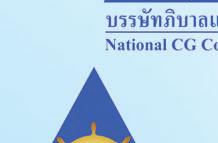





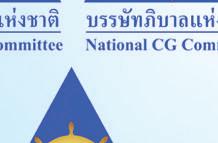
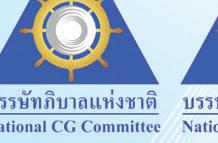



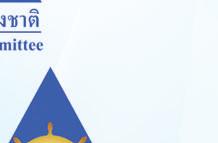

L.P.N. Development Public Co., Ltd. won a Corporate Governance award.






The Company achieved the corporate governance scoring at an “Excellent” level of recognition (5 stars) in the 2022 Thai Listed Companies’ corporate governance assessment conducted by the Thai Institute of Directors Association (IOD) with support from the Stock Exchange of Thailand (SET).









Sustainable Development Goals
The Company has been establishing a vision to serve as a guideline for business operation for more than 16 years in order to ensure that the operation of all departments in the organization is moving towards sustainable development. Each vision is strengthened and appropriate growth target is determined to develop and drive the organization forward. The business plan and short-term goal are identified annually both in terms of values and finance to be in conformity with the mission towards all stakeholders. It is to generate a sound profit, bestow the values of the operation on the customers and be responsible for the environment and society.
In 2022, which was the last year of vision cycle, the Company’s highest priority was to drive the organization towards sustainability. Nonetheless, in this year, the real estate business has to face challenges from multiple crises, from COVID-19 pandemic that has been lasted for the third consecutive year. Although, the situations have improved when compared to 2020-2021, people are still required to live their lives with cautions and faced economic slowdown. Therefore, this year, the Company has to operate business with prudence under strict risk management and adapt to various impacts in order to safely lead the organization and all groups of stakeholders through the crisis.
Regarding the main goal for organization’s growth, the Board of Directors places importance on and sets organization’s goals that are in line with the 2030 Agenda for Sustainable Development that includes 17 Sustainable Development Goals (SDGs) set by the United Nation. The goals in various issues are as follows:
SDGs

Give back to the society by supporting “social enterprises” to enhance the quality of life and dignity of underprivileged women.
Employment, Wages and Income Distribution
Employment, Wages and Income Distribution

Make well-being a significant agenda of the company.
Enhance well-being and occupational safety of staff. Design projects with the residents’ well-being in mind.
Provide educational opportunity to underprivileged women.
Support gender equality in the organization.
Develop projects that protect and restore water-related ecosystem.
Design with water-use efficiency in mind.
Enhance well-being and occupational safety of construction workers.
Be responsible for possible impacts on the environment and society.
Promote schooling for underprivileged children living in construction worker camps.
Treat employees in a fair and equal manner.

Treat wastewater before it is reused or discharged.
Encourage the reuse of treated wastewater.
Take care of the quality of life and the safety of residents of all ages.
Encourage wastewater treatment within the community before discharging good quality water to public waterways.
Reuse treated wastewater in the communities.

SDGs
Design buildings to be energy efficient to reduce energy use.
Create jobs, income and operational profits.
Carry on anti-corruption operation. Encourage integrative researches to enhance the adjustment to become a sustainable organization in the property development industry.
Treat all stakeholders equally.
Respect human right and give significance to providing equal opportunity to people with disability.
Establish appropriate target of return and profit growth of all subsidiary companies.
Promote a sustained and sustainable economic growth of stakeholders.


Develop projects to ensure access for all to adequate and safe housing.
Establish an energy consumption management plan within the projects.
Regularly organize activities to promote energy conservation.
Establish a policy to promote a full and productive employment and decent work for all women and men.

Support process innovation, product innovation and service innovation and business model innovation.
Treat all stakeholders equally. Treat all stakeholders equally. Treat all stakeholders equally. Treat all stakeholders equally. Treat all stakeholders equally.
Develop projects in densely populated areas in response to the increase in population.
Develop projects that have green and public spaces accessible by everybody.


Build a Livable Community for all to encourage the creation of participatory and sustainable societies.

SDGs
Design Concept Green Financial Management

Emphasize the importance of environment in all operational processes.
Establish a plan for an efficient use of natural resources.
Promote waste recycling and reduction in the organization.
Raise awareness and integrate climate change measures into the organizational policies and strategies.
While designing, keep in mind the projects’ overall energy consumption efficiency and water consumption rate.
Design environmentally friendly projects by applying Green Design Concept Standard.

Marketing Management

Efficiently manage and use natural resources in the construction.
Establish a specific policy to eliminate hazardous waste and pollution from the construction.
Promote recycling and reduction of construction waste.
Develop environmentally friendly project.
Control negative impacts caused by construction process using the LPN Green Construction Process Standard.
Establish a plan for an efficient use of natural resources in the community.
Promote recycling and reduction of household waste.
Take into consideration impacts on existing ecosystem while developing a project.
Use the universal design concept while designing the projects so that everybody can use project space without discrimination.
Identify the organizational goals in accordance with international goals.
Collaborate with other organizations to develop various technology and knowledge.


Avoid and prevent possible negative impacts on ecosystem of the project area during the construction operation.
Conserve the ecosystem within the project to ensure its abundance and sustainability.
Provide standardized services in a fair manner.
Green Enterprise
Green
Green
Green Construction Process Green Community Management
LPN’S GREEN JOURNEY
LPN’s sustainable development path
In developing its real estate business, LPN is well aware that maximizing profits alone is not the effective approach to lead the organization and all groups of stakeholders towards sustainable growth. The Company, therefore, adheres to and adopts “Sufficiency Economy” philosophy of His Majesty King Bhumibol Adulyadej the Great, King Rama IX, as a guideline for its business operations. In addition, the sustainable development principles that focus on 3 dimensions: Profit, People and Planet, especially, in the environmental dimensions. There are many processes in real estate development that may have a wide impact, such as the design process, construction process and housing care process.
In the past, the Company has been seeking knowledge and applying principles of international green building design to the project design and development which is made into standard, such as LPN Green Design Concept and LPN Green Construction Process. LPN gives importance to the environment from concept design and development of concrete practice under the 6 GREEN LPN concept which was formulated into strategy for sustainable development, as well as improve the process to respond to current environmental changes by adopting Eco-Design & Zero Waste concept under Sustainable Organization goal.
In 2022, the Company continued to focus on implementing environmental and social responsibilities, and determined targets to assess carbon footprint of the organization with the objective to become a Carbon Neutral Organization and purchase carbon credits to offset the Company’s GHG emissions. In addition, LPN has obtained 2 types of Carbon Footprint for Organization (CFO) labels. Furthermore, the Company has initiated one renewable energy project for common areas and two sales office projects by installing solar rooftops that can save 30-40 percent of electricity bills as well as add value to residential projects.
Green Design Concept and Green Construction Process Standard for Housing
BEC Awards
First LEED Certified Project

First LPN Signature Green Project 6 GREEN LPN
Green Design Concept and Green Construction Process Standard
Dream House Project Livable Community Model
The Seeds: Idea Suggestion
The Seeds: Idea Suggestion #2
Construction Camp Site - Quality Improvement Project
100% BIM Implementation
LPN Signature Course
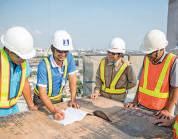
Year of Shift
ISO 14001 and ISO 9001 Kick-off year Product Development Center Green Enterprise Standard Green Marketing Management Standard
Financial Management Standard
of Change
Lumpini Property Management Co., Ltd. achieves ISO 9001: 2015.
LPC Social Enterprise Co., Ltd. achieves ISO 9001: 2015.
Lumpini Project Management Service Co., Ltd. achieves ISO 9001: 2015 and ISO 14001: 2015.
LPC Social Enterprise Co., Ltd. certified as the first group of SE.
TREES Certification Anticipated
Green Community Management Standard Service Development Center

LPN Zero Waste Management Project 2022
LPN Carbon Neutral Organization LPN Zero Waste Management Project 2022 Kick off
LEED Certification Anticipated (Punn Tower)


LPN Carbon Neutral Organization
Update 6 Green Process
CESR PROJECT
In every step of LPN’s operation, the Company places great emphasis on accountability for the environment and society and establishes tangible policies and operational guidelines. Meanwhile, the Company has also been cooperating with both government and private sectors and engaging in activities which promote ideas to preserve and recover the world’s environmental crisis. In 2022, the Company has participated in the following activities:
It is an activity which aims to promote the Company to become a waste-free organization. The activity cooperates with recycle day Thailand which incorporates both government and private organizations in waste management sector and aims to fully transform the purchase of recyclable wastes into digitalization, to increase efficiency with digital technology and development of applications to facilitate users and agencies. LPN’s participation in this activity represents its intention to strive towards the goal of becoming a waste-free organization and solves waste management problems in the Lumpini community operated by LPP Property Management Co., Ltd., such as irregular garbage collection of garbage trucks, improper garbage collection, etc. Drop points are set up to allow proper segregation of wastes from the sources to destinations. Then, appointment for recycled waste purchase trucks can be made through application. In addition to solve the above-mentioned problems, the project will also increase additional incomes for communities from recycling wastes within the project.
Implementation of Lumpini Suite Din Daeng-Rachaprarop Pilot Projects via Application.
• Operational Procedures

Waste Segregation
Members can segregate and categorize wastes as deemed appropriate.
Truck Appointment
Members can make truck appointment by themselves via recycle day Application.
Deliver Recycled Materials to Destination
Recycle day will segregate garbage in detail again and send them to suitable destinations.
Recycled Material Receipt by recycle day
Operational teams will collect garbage at the appointed venues and compete for the amount of waste and rate the members.
Members Earn Points
Members can check the items and points earned through recycle day Application.
LPN Recycle Day 1
Figure: Illustrations from LPN Recycle Day Project Application
In 2022, there are 6 Lumpini affiliated projects participated in the project. As a result of recycled material collection by LP P Property Management Co., Ltd. from the start of the project during May - December 2022, total amount of collected garbage was 6,489.23 kilograms. The total scores for the project were 14,811.78 points, which was equivalent to reduction of carbon footprint of 12,972.22 kg CO2eq as a result of recycled materials from such activities or equivalent to planting of 1,370 trees.
• Table of Total Waste from 6 Participating Projects
of Waste
• Table indicating recycled waste amounts in comparison with carbon footprint reduction in 2022
CD & DVD
Metal/Steel/Galvanized Iron
Black and White Paper
Total Paper Materials
Metal Cans
Aluminum Cans
Cardboard Boxes
PET Bottles
Carton of 12 Beer Bottles
Glass Bottles
HDPE Plastic
Stretch Plastic
Total Plastic Materials
Unclassified Recycled Materials
Books
Electrical Equipment
Greenhouse Gas Management Project 2
Greenhouse gases is another factor that causes global warming and global climate change. The Company has set a goal to become a carbon neutral organization by establishing carbon offsetting plan and continuously improving environmental management in the organization.
In the past year, the Company has assessed greenhouse gas emissions from its operations and activities throughout the year and prepared corporate greenhouse gas emission reports based on historical data in 2021 (data from January - December 2021) to estimate greenhouse gas emissions. The assessment were divided into 3 scopes as follows:
The Company has obtained Carbon Footprint for Organization (CFO) label continuously for 3 consecutive years in order to establish management plan for greenhouse gas emissions from the Company’s activities and being a part in reducing greenhouse gas emissions into the atmosphere. In 2022, the Company was certified and assessed by the Thailand Greenhouse Gas Management Organization (Public Organization) (TGO) on July 26, 2022. The amount of greenhouse gases generated in 2021 (monitoring period for certification was during January to December 2021) equal to 1,785 TonCO2eq.
Nonetheless, the TGO has modified the terms and conditions for organizational carbon footprint assessment (Revised Edition No. 5, January 2021) and required additional GHG emissions report for Scope 3. In addition, the Company’s GHG emission sources have changed. Therefore, it is necessary to adjust the reference base year from 2019 to 2021 to suit the current situation.
Furthermore, the Company also provides online training to educate staffs and raise their awareness on the environment to show its commitment to reduce adverse impact on the environment, especially, to reduce the impact associated with activities that cause global warming. This will lead to problem solving and reduction of activities that cause greenhouse gas emissions.
“Zero-Waste Vibhavadi Road (Phase 2): Driven the Thai Capital Market towards Sustainability” Project 3
LPN jointly announced its intention with alliances to support the drive and expand implementation results of “Zero-Waste Vibhavadi Road (Phase 2): Driven the Thai Capital Market towards Sustainability” Project organized by Thailand Environment Institute in collaboration with the Office of the Securities and Exchange Commission to apply knowledge and experience from participating in the project (Phase 1) to develop and increase the efficiency of internal waste management. The project has 29 business partners from 19 buildings located on Vibhavadi Road who have common goal of achieving Net Zero Emission according to the country’s long-term goal.
Figure: All business partners jointly announced their intentions to support the drive and expand implementation results of “Zero-Waste Vibhavadi Road (Phase 2): Driven the Thai Capital Market towards Sustainability” Project.
Carbon Footprint for Organization Label Registration Certificate
There are
29 business partners participating in the project.
Common goal of achieving Net Zero Emission 0%
“Won Project”
The Company has participated in Won Project of TPI Public Company Limited continuously for 3 consecutive years. This project is based on circular economy concept which refers to industrial systems that have been planned and designed to maintain condition or revitalise materials in the product life cycle, instead of throwing them as wastes after consumption. The Company has publicized, segregated and collected polyethylene plastic waste (stretch plastic) from its head office and Lumpini Tower to be recycled into plastic pellets and reformed into reusable plastic products such as plastic bags. Since its participation in the project until 2022, the Company has reduced greenhouse gas emissions by 277 kgCO2eg or equivalent to planting of 158 trees.
Since its participation in the project until 2022, the Company has reduced greenhouse gas emissions by
equivalent to planting of 277 kgCO2eg 158 trees
SUSTAINABLE POLICY
SUSTAINABLE POLICY
In order to attain organizational sustainability goal, it is essential that personnel in all levels share common understandings and visions of the same goal. Thus, LPN compiles and refines sustainable development concepts into knowledge which is embedded within the organization and being used as guidelines for all sectors to implement. These principles are important and solid foundations for operational strategies of the Company.
Foundation of Sustainable Development Based on the Philosophy of Sufficiency Economy
Since the establishment of the Company, it has been conducting the business in a responsible and fair manner by ensuring the balance of benefits for all related parties. The stability of the Company is achieved from internal management process along with the development of human resources. After the economic crisis in 1997, the Company focuses on the development of projects in accordance with the strategy of the organization and overall economic situation. The Company has attempted to maintain appropriate growth of the organization. In addition, the business operation of the Company has been conducted in accordance with the “Philosophy of Sufficiency Economy” of H.M. King Bhumibol as follows:
Sustainability Guideline and Performances
3 principles 2 conditions 4 dimensions
Moderation
Regularly assess the Company potentials and risks in order to set an appropriate growth rate.
Seek adequate profits from business operation by not exploiting or taking advantage of customers or society.
Use the world’s resources with gratitude.
Return the products and the profits to the society.
•
2 conditions
Reasonableness Cautiousness
Analyze the economic situation and other factors before identifying targeted customers and projects. Take into consideration quality of life of the residents in all aspects, both products and service, with the “Livable Community” concept.
Create a balance of benefits for all stakeholders.
Consider the impacts of the business operation in all dimensions.
3
Strive to be a learning organization, encourage knowledge and skill sharing and integrate various fields of knowledge for the most efficient operation by putting LPN Academy at the core of the mobilization.
Emphasize continual human resources development.
Operate business with caution by establishing suitable strategies for economic situations.
Continuously develop innovation, tools and process for business operation.
Focus on risk management in order to prepare for upcoming crisis.


Assess impacts on stake holders and stakeholder risks throughout the whole process. 1 1 2 2
Identify “integrity” and “honesty” as ones of the corporate values leading to corporate governance which is the cornerstone of business operation, as well as comply with good corporate governance principles.
In every step of business operation, the impact must be taken into account and the balance of the following four dimensions must be created.
Economy - generate adequate income and profits and do not take advantage which will cause negative effects in other dimensions.
Society - build a good relationship with communities and wider society, be a good global citizen and respect all stakeholders.
Environment - use the resources with gratitude in the most efficient and effective manner and reduce the impact on the environment.
Culture - be a part of a wholesome culture conservation, respect diversity and conduct business on good ethical principles.
We believe that sufficiency and adequacy will bring about balanced and sustainable growth.


POLICY AND SUSTAINABLE MANAGEMENT GOAL
The business operation of the Company has always been done in a socially and environmentally responsible manner in all processes and in every step. This is to prevent and minimize possible environmental and social impacts and take proper care of stakeholders according to the organization’s sustainability management guideline or LPN Platform 3-6-8-10, which has been refined and constantly developed throughout 30 years of its operation. Triple Bottom Line framework, a principle of sustainability development that focuses on the 3 ultimate components in economy, society and environmental has been applied in the establishment of the operational goal of the Company. “6 Green LPN” strategy showcases the responsibility towards eight groups of stakeholders from ten property development processes in order to maintain the balance of the business operation and enhance stable growth. The ultimate goals of the three components of our business operation are as follows:
Create the balance of adequate and regular profits from the operation on the basis of good corporate governance, responsibility and transparency in business operation, appropriate risk management and the consideration for profit-sharing with all stakeholders.
Take social responsibility not only for internal stakeholders but also external parties including trade partners, customers, residents and neighboring communities, construction workers as well as the national society at large.
Reduce the impacts of the project development (In Process) in terms of the project design and construction and takes care of the environment and quality of life of the residents and neighboring communities after the handover of the project.





Usually, the responsibility of a real estate developer comes to an end after the product or condominium units are handed over to customers. On the contrary, the Company realizes how significant it is to ensure that the quality of life of the residents of the projects developed by the Company is enhanced and taken care of as they have trust in Lumpini brand and decide to make our condominium unit their “home”. This is the beginning of the development of “Livable Community” concept which is an after-sale service offered both in terms of building management and community management. The concept has been implemented for more than 30 years. The responsibility towards all stakeholders of the Company has started from the policy level within the organization. It follows the Philosophy of Sufficiency Economy that emphasizes on creating integrated values in all sectors for sustainable development and focuses on using the information obtained from the study, research and development and the use of technology for decision-making based on good governance that takes into account all stakeholder groups in all 10 core processes of the property development of the Company as follows:
6 GREEN LPN
All through the 30 years, the business operation of the Company has always been done in a socially and environmentally responsible manner in all processes. “6 GREEN LPN” concept is developed from our extensive experiences in property development and community management as a practice to ensure a balanced and sustainable operation for the benefit of all stakeholders. At present, 6 GREEN LPN concept is inclusive of six aspects of environmental and social responsibility as follows:
1 2 3
GREEN ENTERPRISE
The business operation that focuses on human resources management and human capital.
GREEN FINANCIAL MANAGEMENT
The appropriate returns and growth of the organization.
GREEN DESIGN CONCEPT
The product design that is environmentally responsible.
4
GREEN MARKETING MANAGEMENT
The marketing strategy that is fair for the consumers and competitors.
5
GREEN CONSTRUCTION PROCESS
The management of environmental and social impacts from construction process.
6
GREEN COMMUNITY MANAGEMENT
The care for and management of the quality of life of the residents after the handover of the project.



8 STAKEHOLDERS
The Company identifies the first tier stakeholders involved in various operational processes based on the assessment of the level of involvement of each group of stakeholder. The level of involvement of the stakeholders is assessed by the level of influence they have on the organization and operation along with the level of impacts from the operation of the Company in order to be able to identify the importance of each stakeholder and establish a strategy to encourage their participation. The operational framework is established and the impacts on all stakeholders are minimized to enhance sustainable development and growth. The first tier stakeholders of the Company is categorized into eight groups as follows:
1 2 3 4
SHAREHOLDERS STAFF CUSTOMERS SUPPLY CHAIN
refer to shareholders of the Company, whether they be companies, funds or individuals who are benefited from the operation that emphasizes good corporate governance and environmental and social responsibility.
refer to those who are working for the Company and driving the operation of the Company to move forward in a sustainable manner, inclusive of staff in the operational level and managerial level.
refer to those who are interested in the project developed by the Company and have reserved to buy and made a down payment. In the future, when the project is completed, the customers will become joint owners /residents. In addition, the customers also refer to those who are interested in renting the Company’s condominium units and have made rental contracts and paid rental fees. In the future, this group of customers may become buyers and residents.
refers to trade partners or business alliances of the Company who take part in the design and construction of projects as if they are one of the staff of the Company. The objective is to achieve the mutual goal. LPN team also refers to co-investors in project development. They can be persons or companies.
5 6 7 8
NEIGHBORS RESIDENTS LABORS ENVIRONMENT
refer to those who live in the communities surrounding the projects of the Company that are under construction and are affected by the impacts from the start of the project development through to after the project is being handed over.
refer to those who live in the project of the Company that has been handed over as customers or renters and are parts of the community taken care of by the Company.
refer to workers of the business alliances (trade partners) that are responsible for constructing the projects of the Company, inclusive of Thai and migrant workers.
refers to the components of sustainability that is at the foundation of all business operations. The operation of real estate development business directly impacts the environment, therefore, the Company focuses on the conservation of environment nearby the project.



10 PROCESSES
PROCESS 01
Project Location
The development concept is designed to be appropriate with the project location. The two concepts for project development are pilot project i.e. project development in new locations with minimum competition (Blue Ocean Strategy) and expanded project i.e. project development in highly successful locations where demands for residential property are high.
PROCESS 04 PROCESS 05 PROCESS 02
Project Location
1
Project Development Process Specification
Project Development
Process Specification
Projects are analyzed and development goals are set in order to specify project’s characteristic and size and development steps, including brand and product value that will be delivered to customers, by considering the return on investment, the location suitability and the project development pattern.
PROCESS 03
Land Purchase
The decision made by the Management to buy a piece of land is based on the vision as well as information from the Research and Development Department and Marketing Department. The demand, supply and feasibility for project development are carefully studied beforehand in order to ensure that the project development is in accordance with the strategy of the organization and customers’ needs.
2
Design Concept
Products are designed with environmental and social responsibility in mind in response to the needs that are in ‘balance’ with every dimension of living. It uses the LPN Green Design Concept Standard which is developed by LPN and is consistent with internationally accepted Green Building Standard. This is to standardize the product making it a residence that promote resource conservation and truly minimize environmental impact.


3
4
Land Purchase Design Concept Sales & Marketing Management
5


Sales & Marketing Management
The marketing activity of the Company is “Human Centric” or directly focuses on the needs of the customers. The policy of the Company is to build the first home for those who do not yet own a house. It is to give something back to the society. Furthermore, the Company respects the rights of customers and keeps our promise.

GRI : 102-9 Supply chain 102-16 alues,principles,standards,and norms of behaviour
PROCESS 06
Financial Management
The business growth and returns for stakeholders are identified in line with the annual business plan. The construction costs and profit of each individual project is appropriately prepared. The financial statements are accurate and reliable and are prepared in a transparent and auditable manner without any hidden agendas. In addition, financial risks have always been managed.
PROCESS 07
PROCESS 08
Operational standard is set and the procurement inspection is regularly and concisely performed according to international standard. This includes choosing quality and environmentally friendly materials and promoting the use of materials that contained recycled content to reduce the natural resource consumption.
The Company does not only apply Q-C-S-E-S+P strategy in its management, but also keeps in mind the impact on surrounding society, community and environment in every dimension. Moreover, it manages possible risks during construction by cooperating with alliances and following the Green Construction Process Standard strictly.
The quality of condominium units and common area is fully inspected before the condominium units are handed over to reassure the customers that they receive up-to-standard and good quality products. As a preparation before moving in, the Livable Community policy and residential rules are communicated and informed to residents to create understanding, acceptance and happiness in living together.
“Livable Home Strategy” is one of the core strategies of the organization. The Company does not only manage the building but also the quality of life, society and environment and promote “togetherness, care and share” culture.



Project Management
Condominium Unit Handover
Mangement
LPN SUSTAINABLE STRATEGY
The operation of property development business directly impacts the environment and society especially the development of large-scale projects. It can be seen that low quality properties usually cause serious environmental and social problems. The Company has thus given importance on business operation that is environmentally and socially responsible as well as incorporated the Corporate Environmental and Social Responsibility (CESR) into the business plan in order to pave the way towards sustainability. We do not only focus on CESR In Process along the thinking of “6 GREEN LPN” but also on CESR Out Process by supporting activities that promote “Togetherness, Care And Share” culture.
Moreover, the Company has established organizations, the operation of which is separated from the core business operation of the Company but is partly related to the business processes. The purpose of the organizations is not to seek profits but to support the society. This is considered CESR As Process. The two organizations are LPN Academy, the center for human resources development and knowledge sharing and LPC Social Enterprise Co., Ltd. the center for the development of quality of life of underprivileged women.
Components in the Operation of the Corporate Environmental and Social Responsibility of the Company
1
CESR In Process
The responsibility towards the impacts of all processes of the business operation of the organization on the stakeholders, environment and society.
2
CESR Out Process
The participation in and support for environmental and social activities that are not related to the operation of the organization.

3
CESR As Process
The support for and implementation of environmental and social activities that are not involved with the core business of the organization but are partly related to the business process.
















IN PROCESS
1. GREEN ENTERPRISE
The Business Strategy that Emphasizes the Management for Sustainability and the Management of Human Capital
2. GREEN FINANCIAL MANAGEMENT
The Strategy to Achieve Appropriate Return and Organization Growth
3. GREEN DESIGN CONCEPT
The Environmentally Responsible Design of Product
4. GREEN MARKETING MANAGEMENT
The Marketing Activities that are Fair to the Customers and Competitors
5. GREEN CONSTRUCTION PROCESS
The Management of Environmental and Social Impacts from Construction Process
6. GREEN COMMUNITY MANAGEMENT
Management of Quality of Life of Residents after Handover
1 GREEN ENTERPRISE
The Business Strategy that Emphasizes the Management for Sustainability and the Management of Human Capital.



While the global economic crisis and pandemic has been going on in 2021, the Company still values and focuses on working with environmental and social responsibility in every process and every step of its business operation. This is to prevent and minimize possible impacts on the environment and society, as well as appropriately take care of 8 groups of stakeholders in accordance with the 6 Green LPN approach, which will lead to a sustainable business operation. Corporate policy and operational standards in all sectors are established. The Company also alleviates and eases the burden or the impacts of this crisis on stakeholders in full capacity. The two components of the corporate policy are as follows: 1. Sustainability Management 2. Human Capital Management
1. Appropriate Growth and Profit
The Company has developed the management guideline and strategy by establishing appropriate growth and profit target giving sustainable and substantial returns to all stakeholders. In the past year (2021) in particular, the Company has taken into account the development and sustainable solutions in a more systematic manner since it was the year that real estate businesses experience the consequence of the COVID-19 crisis.
2. Affordable Home
Adhering to the Philosophy of Sufficiency Economy which promotes social well-being, the product development policy of the Company intends to build residence that is “suitable” for living as well as create a better quality of life for residents in every dimension.
3. Good Quality of Life in Great Culture
Apart from developing residential condominiums and homes, the Company also enhances the quality of life of all members of the community under the “Livable Community for All” strategy. The projects are equipped with convenient facilities and safety systems. More importantly, “togetherness, care and share” culture is promoted through various activities to raise awareness of a harmonious community.
4. Balanced Profit for Stakeholders
The Company focuses on long-term growth which is consistent with the governance and sustainability principles. There is a policy to generate various forms of profits for all stakeholders in a balanced and appropriate manner.
5. Risk Management and Corporate Governance
All aspects of risks are managed to be under control and the returns are determined upon the competitive situation and performance of the Company. Risks are reduced by reserving fund to maintain the liquidity of the Company. All of the above are done in a responsible, transparent and auditable manner in accordance with sustainability principles. The Company does not exploit others or focuses only on profit.
6. Anti-Corruption
The Company is against all forms of corruption, whether it be internal or external, by establishing concise operational process to reduce risks, communicating the importance of anti-corruption policy to employees, identifying integrity as one of the values of the organization, declaring the intention against corruption and complying with law and regulations and paying taxes.
7. Environmental and Social Awareness and Responsibility
The Company takes responsibility for the operational impacts with the 6 GREEN LPN and operational standards in every departments. It also promotes environmental and social awareness and encourage staff participation through various environmental and social operations and activities.
8. Giving Back to the Society
Operating through LPC Social Enterprise Co., Ltd., an affiliated company of L.P.N. Development Group, the Company takes part in building a great society by creating job opportunities for underprivileged women so that they have stable jobs, earn income to enhance their families’ quality of life and develop a better quality of life for themselves. In addition, the Company also imparts knowledge and experiences to the society.
1. Corporate Value
The Company puts emphasis on the development of human resources to carry on the success of the Company. LPN Way is developed from the core competency of staff to be the guideline that will promote the sustainability in the management of human resources in an integrated manner, to build the identity of the organization and be the operational standard. LPN Way comprises two milestone values i.e. “continuous development” and “respect for stakeholders”. The seven components of the values are “C-L-A-S-S-I-C” as follows:



























2. Livable Organization
The concept of the management of human capital of the Company is based on the enhancement of happiness through the six factors at work by continuously developing the quality of staff, promoting exchanges of experiences and knowledge in order to become a learning organization and developing the operation guideline under the culture and values of the organization (LPN Way). Staff
6 Factors of Livable Organization
Enhance the happiness of staff by organizing internal activities to build good relationship between executives and staff in all departments and promoting participation in various activities e.g. the activities within the organization and environmental activities to raise awareness about doing good deeds.
1. 4. 2. 5.
Remuneration Work
Regularly improve the efficiency of the operation to increase the efficiency of the operational process and encourage staff to develop process innovation at work.
Provide appropriate, equal and fair benefits and remuneration and enhances the quality of life of staff by promoting work-life balance.
3. Learning & Growth
Career
Provide opportunity for career advancement and signifying career path for staff in all levels equally, whether they be male or female staff as well as build their capacity via trainings.
Arrange appropriate working environment and atmosphere and promote occupational health and safety of staff.
3. 6.
Build the reputation of the Company by adhering to the principles of good corporate governance, respecting human rights and operating the business in a transparent manner so that the staff can take pride in being a part of the organization.
With the commitment to develop the organization towards sustainability, the Company has established LPN Academy to develop the capacity of staff to be able to support the business expansion and carry on the values and culture of the organization in accordance with the LPN Way via training courses and curriculums. It is also aimed to transfer the knowledge to external organizations in the future.
4. Work-Life Balance
The Company takes care of the quality of life of staff and encourages them not to over work and to spend time with their family. The Company sets appropriate working hours per week and encourages all staff to take annual leave.
GREEN ENTERPRISE OPERATION
The Business Strategy that Emphasizes the Management for Sustainability and the Management of Human Capital
Managing an organization for sustainability is main philosophy of the Company and the heart of 6 GREEN LPN. It is integrated in all aspects of the Company’s operation i.e. Green Financial Management, Green Design Concept, Green Marketing Management, Green Construction Process or Green Community Management. The Sustainability Management under Green Enterprise concept covers structural management operation of the organization which aims to be an organization with good governance.
Risk Management
Opportunity and risks are present together in every process of business operation. In 2022, the Company has adjusted its strategy to be in line with the overall economic situation including the situation of the real estate business that has been affected by the Coronavirus Disease (COVID-19) pandemic so that there is a concise operational standard to assess and be cautious of possible risks in various dimensions. These risks might bring damage the organization. More details of policies and risk management plans for 2023 can be found in Form 56-1 One Report / Annual Report 2022.
• Sustainability Risk Assessment
The Company realizes that real estate development business operation has significant impacts on various stakeholders. In 2021 the Company has expanded its revenue base from related service business to increase income and reduce expenses. At the same time, the Company’s important policies are communicated to employees at all levels for acknowledgment via the Company’s communication channels so that they can take parts in the risk management. This enables the Company to supervise the risk management efficiently. Due to the impacts of COVID-19 pandemic, the Company has adjusted its business operation policy by adding marketing channels, online sales and project visits through 3D Virtual technology, preventing the outbreak and risks in worker camps and maintaining the Green Construction Process standard under the Q-C-S-E-S+P strategy to reduce construction impacts on stakeholders. The Company adopts technology and innovation from the international green building standards and develops them together as a project management guideline for LPN operation. This reduces the neighboring communities’ complaints on construction work and brings about safety for workers working on construction sites. It also reduces the possible negative impact on the organization’s reputation which is important for maintaining the sustainability of the Company.
During the COVID-19 pandemic situation, the Company still focuses on the livelihood of residents and co-owners. It develops its project management and service providing for residents using the “Livable Community” strategy that emphasizes on safe hygiene and well-being. The equipment and assets are not only well-maintained to ensure that they are ready to use, but they are also safe and sterile. The Company pays attention to creating happiness and good society. It seriously and consistently builds an environmental awareness in accordance with the F-B-L-E-S+P approach that has been studied and developed from a long experience in community management.
Sustainability Management
• Revision of Risk Management Policy and Internal Control
Risk management policy of the Company is in accordance with the risk management and internal control principle. Risk management policy has been regularly reviewed in order for the policy to be in accordance with changing situations and the current circumstances that involve various factors and change rapidly from internal and external factors. This is to reduce impacts by reducing the risks to an acceptable level. The Audit Committee, who is independent from the Executive Committee, is responsible for proposing risk management guidelines and providing risk management recommendations to the Executive Committee. Furthermore, the Committee monitors the management and reviews and revises the internal control system together with the auditors on a quarterly basis. The issues include the operation, use of resources and assets to prevent any mistake, damages or corruption, credibility of financial reports and compliance with rules and regulations are examined so that the internal operation of the organization is smooth, transparent according to the good governance and corporate governance principles and in line with organizational strategy.
Good Governance and Management Structure
The Company adheres to the good corporate governance principle when conducting business. Good management structure and clear division of responsibility and management which enable checks and balances on the basis of fairness, equality and transparency accountability are important characteristics for good corporate governance.
Having fair and transparent management structure supports good corporate governance and helps develop business competitive ability of the Company. The management which bases on honesty, integrity, virtue and ethics contributes to transparent and accountable cooperation between stakeholders and the organization. This enables the organization to operate with higher efficiency, effectiveness and stability as well as sustainable growth. It will add economic value to the operation, build the confidence of shareholders, investors and stakeholders and reflect social responsibility of the organization.
The Board of Directors, thus, established core corporate governance principles of the Company and subsidiary companies in which the Company is holding more than 90% of shares as follows:
• Treat all shareholders and stakeholders equally and fairly.
• Dedicate to the Company and perform duties with caution and transparency for the highest benefits of the organization, shareholders, investors and all stakeholders.
• The Company has established the Code of Conduct for the Board of Directors and staff as a principle and guideline for the compliance with the corporate governance. In 2022, the Company applied technology in trainings and propagated communications about anti-corruption policies and procedures in the form of training, online employee orientation, and add tools for online review through learning clips, to facilitate employees to be able to learn anytime and anywhere.
• Communicating and reviewing the Code of Conduct - No. of staffs completing the revision test (Cumulative) 1,951 staffs.













Organization Structure
The management structure of the Company in 2022 comprises six subcommittees under the organizational structure as follows:
Board of Directors
• Corporate Environmental and Social Responsibility Committee
This Committee has been established to provide oversight of the Company and subsidiary companies’ environmental and social responsibility. The focus is on the possible impacts on stakeholders.
The Board of Directors participates in the corporate operation on social and environment responsibility through this Committee. The Board of Directors appoints an appropriate person to take up the position of the Chairman of the Committee. The Chairman of the Committee is responsible for selecting qualified persons from every department of the Company, subsidiary companies and affiliated companies to be committee members. At the end of 2022, the Committee has 20 members including the Chairman of the Committee.
The composition of this Committee is truly an association for sustainability. It is a cooperation between highest-level executives of the Company, subsidiary companies and trade partners in order to consider all environmental, economic, social and good governance risks and impacts as reflected by prominent stakeholders who have influence on the decision-making of the organization. (See more details regarding names of committee members in the 2022 Annual Report (Form 56-1 One Report).)
Good Governance and Management Structure
The Company has publicly announced the Corporate Governance Policy on www.lpn.co.th under “Investor Relation” topic and “Good Corporate Governance” subtopic which allows stakeholders and public an easy access to the policy. The Board of Directors as the highest authority in the organization has to abide by this good practice. It is one of the significant sustainability issue that the highest-level executives must take parts in moving it forward. The principles established by Corporate Governance Policy are as follows:
• Establish Clear Leadership Role and Responsibilities of the Board as the head of the organization who creates sustainable values for the business
• Define Objectives and Goals for Business Sustainability
• Strengthen Board Effectiveness
• Nominate and Develop High-Ranking Executives and Personnel Management
• Nurture Innovation and Responsibility Business
• Strengthen Effective Risk Management and Internal Control
• Ensure Disclosure and Financial Integrity
• Ensure Engagement and Communication with Shareholders
Anti-Corruption
The Company has established the anti-corruption policy in every dimension and strictly in compliance with law. The Company has encouraged staff to monitor the corruption together. Integrity is identified as one of the core values of the Company that staff and executives have to strictly comply with the guidelines for promoting and instilling a core value of being “Smart and Good” in the staff are as follows:
• Communication and training on anti-corruption
The Company adapts its communication and training methods to current situation. For new staff, the content is included in the online orientation course. Communicating and reviewing the Code of Conduct and conducting online revision tests for all employees are done at a specified period of time. In 2022, the Company organized a training course for employees to review the Code of Conduct and conducted an online behavior review according to the Code of Conduct as follows:
Number of staff participating in the behavior review in 2022: 1,951 persons
Average hours of Code of Conduct training are 212 hours/person/year
Provide trainings on the Personal Data Protection Act (PDPA), develop tools to support learning for handicapped staffs (hearing impaired) by developing learning clips which conduct teaching by using sign language interpreters.
Developed new tools for reviewing the Code of Conduct through Yammer, the “Code of Conduct Intensive Tutoring” Room.
• Communication and training on anti-corruption policies and procedures (general staff)
Divided by score groups of staffs taking the Code of Conduct test (persons)
Score groups
No. of staffs completing the Code of Conduct revision test (cumulative)
Pass > 80 scores
50-79 scores
Full scores 100
Less than 50 scores
Number of staffs who attended Code of Conduct and CLASSIC training (person)
Number of complaints received through whistle blowers (cumulative)
1,951 0 (Persons) (complaints)
• Establish a corruption risk assessment
• Revise anti-corruption measures on a regular basis
Work groups CLASSIC Code of Conduct New Staffs
• Establish various complaint channels for staff to notify the act of corruption or misconduct as follows
Directly inform the Chief Executive Director or the supervisors. The Suggestion Box in the office.
• In-house corruption
Send a message to the Chief Executive Director or the supervisors on WhatsApp. The organizational commitment questionnaire.
Submit complaints by post. Inform the Organization Development Section, Human Resources Management Department.
In 2022, there are 3 cases of serious breach of discipline and wrongdoing employees were caught. It is divided into 5 cases of violation of work rules. The punishment, according to the regulation, for five cases is the termination of employment.
Fair employment and diverse workforce
In 2022, as the COVID-19 pandemic situation began to ease, the Company adheres to the effective and fair recruitment process similar to the previous year, even this would involve more complicated tasks. Employees must pass specific knowledge test for each position and an interview in order to ensure that the organization will recruit personnel who have full qualifications and are suitable for the position according to LPN’s employment guidelines. In 2022, there are new employees in each business line as follows:
Real Estate Development Business
Number of new employees 256 persons
Number of resigned employees 458 persons
Recruitment of new employees and resignation of existing employees: real estate development business
By Gender (persons)
By Age Range (persons)


By Region (persons)
Service Business
Number of new employees 2,147 persons
Number of resigned employees 1,372 persons
Recruitment of new employees and resignation of existing employees: service business
By
Gender (persons)
By
Age Range (persons)


By Region (persons)
Nontha -buri
Pathum Thani
Samut Prakan Rayong
Ratcha -buri
Cha -choengsao
Ayutthaya
Udon Thani Cha-am
Pattaya /Chonburi
Saraburi
Treatment of staff
It is the Company policy to treat all staff in an equal manner and this extends to staff in the affiliated companies and in the LPN team. Importance is placed on all areas including appropriate remuneration and welfare benefits, occupational safety and health for all and well-being of staff and their family members. Details are as follows:
1. Health care for employees who have a high likelihood or risk of developing occupational diseases
The Company plans and specifies the annual medical check-up period for all employees. Unfortunately, the COVID-19 outbreak has caused the postponement of the annual medical check-up. However, the Company has monitored the health of employees who are at risk of occupational disease. Most of their health are within normal range.
In 2022, 14 employees were injured at work. Most of them were minor injuries and there was no work-related fatality.
2. Maternity leave and post-natal leave

The Company policy is to enhance quality of life of staff. The staff’s families are considered an important factor to make staff perform their work happily and efficiently. The Company supports pregnant staff to take a full period of maternity leave according to law, while being remunerated fully.
Real Estate Development Business
Total 10 persons
divided into 5 staffs who are on maternity leave and 5 staffs who have returned to work.
Post-natal leave: - staff
Service Business
Total 30 persons
divided into 8 staffs who are on maternity leave and 18 staffs who have returned to work.
Post-natal leave: 4 staffs
3. Impact and complaints on unfair employment practice
There was no compliant in 2022.
4. Ratio of standard wages to minimum wages
The Company’s standard wages are higher than the minimum wage, classified as Level 1 - 4 staffs (Bachelor degree and High Vocational Certificate) receive average wages of 1.39 times higher than the minimum wage (39 percent) and community service staffs receive average wages of 1.19 times higher than the minimum wage (19 percent).
Wage ratio (base salary) compared to standard wage (minimum wage)
Level 1 - 4 staffs:
LPN’s wages are higher than average of 1.39 times (27%).
Bachelor degree Level 4 = 19,700 Level 3 = 15,100
High Vocational Certificate Level 2 = 11,700 Level 1 = 10,700
5. Welfare Committee in the workplace
Community service staff:
LPN’s wages are higher than average of 1.19 times.
Total average:
LPN’s wages are higher than average of 1.21 times.
The Company promotes participation of staff in designing policy regulations that concern their welfare benefits in order to protect their interest and to ensure fair treatment. Furthermore, staff participation allows the Company to hear their voice, which will help it to allocate welfare benefits according to staff needs and for their best interest. In 2022, a new Welfare Committee was elected, comprising 28 committee members, or 0.77% of all staff.
Samut Prakan
6. Workplace injury rate and continuous absence
Type and rate of injury, occupational diseases, absenteeism, and number of workplace death cases
1. There is no fatal accident.
2. In the Q3, there were 3 workplace injury cases, 2 staffs were cut by broken glass and 1 fell down the staircases.
• Workplace Injury Rate and Accumulated Accident Cases
7. Organizational workforce divided by gender and age in 2022 separated by business lines
• Proportion of management and employees divided by regions: real estate development business
8. Remuneration, welfare and other benefits in 2022
In 2022, although the Company is worryingly concerned about the pandemic and the economy which consistently affect the overall residential property development business, it continues to focus on policies and welfares. They are important matters affecting livelihood and well-being of the employees. The Company is well aware of the necessity and importance of maintaining several welfare programs that help alleviate the burden of employees during difficult times. The Company has managed the risks and adopted policies that have the least impact on the important staff welfare. Details are as follows.
• Welfare
• Life/Accidental insurance
• Group health insurance
• Grant welfare
• Loan welfare
• Child scholarship
• Provident fund
• COVID-19 vaccination services
• Influenza vaccination services
Human Rights Policy and Labor Practices
Other benefits
• Bonus
• Annual wage adjustment
• Annual level adjustment
The Company recognizes and respects human dignity and equality of individuals without any discrimination. Employees of the Company and its subsidiaries must treat each other and all stakeholders with respect and dignity. The employees, while performing their duties, need to conduct themselves properly in accordance with the Company’s rules and regulations and good traditions without causing any negative impact on the image of the Company.
Furthermore, the Company has realized the importance of labor. It will fairly treat both Thai and immigrant workers in compliance with labor laws, rules, regulations and labor related restriction.
In addition, the Company encourages staff with disability to take part in the Company’s activities. It organizes training courses on human rights for staff and community service staff. There have been six aspects of human rights promotion (for staff with disability), including:
1. Support and promote operation
including sharing work knowledge with colleagues and assigning key organizational tasks that are aligned with skills which are increasingly done via online channels this year
4. Support and promote volunteerism
such as social benefit activities
2. Support and promote learning and development of knowledge
including trainings to develop work knowledge and skills together with employees in the organization through sign language interpreters and trainings to develop on external knowledge and skills through online channels
5. Support and promote good relationships
including quarterly meetings of disabled staff, online employee gatherings to prevent the spread of COVID-19 and expressing concern for employees under supervision
3. Support and promote health aspects
including doctor visits for health care consultation and providing knowledge and understanding on self-care during the COVID-19 outbreak
6. Support and promote opportunity and quality of life
including support for COVID-19 vaccination, provide generic drugs for construction projects and provide ATK (Antigen Test Kit) to the employees who came to work at the office
Grievance about human right impacts 2022
• Number of grievances about labor practices filed, addressed, and resolved through formal grievance mechanisms
• Number of grievances about human rights impacts filed, addressed, and resolved through formal grievance mechanism. No grievance about labor practices No grievance about human right impacts
Green Enterprise Standard Checklist of LPN
Green Enterprise Standard Checklists of the Office of Human Resource Management consisted of 32 items, 31 items were implemented, and 1 item was in the process of assignment to business groups.
Supply Chain Management
The Company is confident that having good relationships with trade partners does not only bring about collaborative success but also build a strong collaboration in going through crisis. The fact that the organization and stakeholders, in this case ‘trade partners’, are able to survive the 1997 economic crisis and continue operating their business operation indicates that business operation of the organization can truly create sustainability in the society.
Although strong identity and values of LPN together with concise risk management play a part in getting the Company through the economic crisis, having good trade partners who are cooperative and supportive during tough time is the turning point and has contributed to the Company’s success until now.
For more than 20 years, the “trade partners” have become “alliances” and are turned into “business alliances”. Now they have become “LPN Team” sharing business development and growth and working as if we are a part of each other. Thus, there are collaboration in every process of operation throughout the Company’s supply chain aiming to achieve the highest goal in supply chain management of the organization.
The Company realizes that to build this kind of business’s supply chain collective values and collective success must be create d. Operating profits do not guarantee business’s survival should there be another economic crisis. Creating collaborative responsibilities and tight bonds that allow business alliances to operate their business indicates that the Company can also maintain its business operation and both can achieve sustainable growth together.
The Supply Chain Management Process
01 02
COMMIT
ENGAGE
ASSESS
IMPLEMENT
03 05 04
MEASURE
COMMUNICATE SUPPLY CHAIN
The staff of the Company and LPN Team communicate with each other on a regular basis. It is two-way communication via WhatsApp and Microsoft 365 so that all participated parties are able to learn, share ideas and be up-to-date which generate utmost operational efficiency.
COMMIT
ASSESS IMPLEMENT
ENGAGE MEASURE
LPN finalizes the business plan.
LPN and LPN Team have a meeting to:
• Recognize the plan and establish collaborative goals.
• Listen to each other’s opinion and expectation.
• Identify and consider any impact that may happen while working together.
• Develop a possible risk prevention plan.
Participation of LPN and LPN Team in each project development.
LPN and LPN Team operate in accordance with the established work plan.
LPN and LPN Team organize a monthly meeting.
• Follow-up the work, assess the performances and analyze problems to improve the operation or adjust the operational plan as appropriate. This will help increase the efficiency of the operation in the supply chain.
2 GREEN FINANCIAL MANAGEMENT
The Strategy to Achieve Appropriate Return and Organization Growth
SDGs


Green Financial Management is the management of finance with the objective of achieving stable and sustainable business growth, operating performance that have appropriate and continuous profitable growth and balanced allocation of profit among all stakeholders. The financial ratio and expenses of the Company and subsidiary companies are properly managed to suit the income target and business plan of the organization. It includes the distribution of the dividend at the rate of no less than 50% of net income to shareholders, the appropriate remuneration for executives and staff as well as the establishment of selling price of condominium units to be cheaper than those of the competitors for the benefit of the customers. The Company has also allocated a budget to promote the quality of environment and society during project construction.
Furthermore, the preparation of the financial statement is transparent and auditable. Documents have been prepared on a quarterly basis to communicate the performance of the Company to the shareholders in order to build their confidence and showcase the importance of the financial discipline and financial risk management.
Accountability Financial Statement
The Company realizes the importance of the accuracy and transparency of the financial statement and has arranged appropriate and efficient internal control system. Significant information is disclosed in the notes to financial statement along with the explanation and analysis to ensure that the accounting information is accurate and complete for the utmost benefit of the shareholders and investors in using the financial statement. The components of the accountable financial statement are as follows:
1. Transparency
The financial statement of the Company is prepared in a transparent manner in accordance with the good corporate governance principles. The appropriate and efficient internal control system is arranged. The Board of Directors of the Company has appointed an Audit Committee comprising four independent directors, three of whom are knowledgeable in finance and accounting, to review the accounting policy and audit the quality of the financial statement as well as the internal control system. The report of the Audit Committee will be included in Form 56-1 and the Annual Report of the Company.
2. Auditability
The Board of Directors of the Company has appointed the Audit Committee to oversee the operation and review both annual audit plan and long-term audit plan. The items in the financial statement are to be randomly audited and the outcome of the revision will be considered on a quarterly basis. Any issues found will be addressed in a timely manner. The Audit Committee opines that the internal control system of the Company is sufficient and effective and supports the development of the quality of audit work both in terms of personnel and operation to be of international standard.
3. Disclosure without Hidden Agenda
The Company discloses sufficient significant information in the notes to financial statement along with the explanation and analysis to ensure the accuracy and completion of the financial information record for the utmost benefit of the shareholders and investors in using the financial statement, especially the disclosure and report of the prices of all pieces of land bought to the Stock Exchange of Thailand.
4. Measurable
In order to ensure the transparency of the audit standard which will entail the sustainability of the Company, the financial statement of the Company is prepared in accordance with the financial reporting standard as prescribed by the Accounting Profession Act B.E. 2547. The brief items in the financial statement are prepared in compliance with the notification of the Department of Business Development, the Ministry of Commerce in 2011 regarding the requirement for the brief items to be shown in the financial statements, and in compliance with the regulations of the Securities and Exchange Commissions regarding the Preparation and Presentation of Financial Statements under the Securities and Exchange Act B.E. 2535.
5. Discipline
The discipline and auditability in the financial management of the Company are ensured. The investment is controlled so that the capital of the Company is not invested in the business that is outside the area of expertise or in the activities that have conflict of interest with the Company. It is also made sure that the circulating capital of the Company is sustained to be sufficient for the payment of the remuneration for staff and all stakeholders.
Green Financial Management Standard Checklist of LPN
6. Risk Management
Risks are taken into account in the investment or financial operation of the Company. Investments will not be made if the Company has to borrow more than we can afford to repay. Instead, the Company will invest with the existing resources and knowledge. The debt to equity ratio is maintained not to exceed 1:1 and is audited by the Risk Management on a regular basis.
Apart from Accountability Financial Statement Principle, the Company has developed its own checklist for Green Financial Management. The checklist is developed by Financial Management Department in 2018 as a management standard to be used by policy level to operational level. It focuses on transparency and has a good and effective internal control system. The allocation of returns to stakeholders is fair and appropriate. An important business goal is the continuous growth of the Return on Investment and profits. Thus, financial management plan and strategy should be appropriated and takes environmental and social responsibility into consideration in order to achieve sustainable growth.
Green Financial Management Standard Checklist consists of total 13 items from 4 standards as follows:
1st Standard In terms of goals, determine appropriate returns and growth of the organization.
1.1 Result of the Board of Directors’ consideration on business plan in terms of feasible and tangible operating results based on review of the Management Committee (MC).
1.2 Result of the Board of Directors’ consideration on budgets which are appropriate according to the business plan in terms of incomes and expenses based on review of the Management Committee (MC).
1.3 Determine a date to review and adjust business plan in terms of operating results to suit the situation based on review of the Management Committee (MC) and propose to the Board of Directors for approval.
2nd Standard Generate a balanced return or modest operating profits and continuously on the basis of good corporate governance, as well as distributing returns to all groups of stakeholders.
2.1 Criteria for distribution of annual dividends to shareholders from the Company’s operating results.
2.2 Criteria for distribution of annual bonuses to employees from the Company’s operating results.
2.3 Conditions for entering into business transactions with alliances and trade partners.
2.4 Conditions for entering into financial transactions with financial institutions.
3rd Standard There is effective internal control and good governance regarding internal control and financial risk management.
3.1 Create a system to control as much risk as possible (operation manual).
3.2 Check that the works are in accordance with the operation and evaluation manual.
3.3 Review and develop control system in order to keep up with events and increased risks in each situation.
4th Standard Financial statements and disclosure of reliable financial statement management and tax information, based on transparency and auditability.
4.1 Result of random tax inspection of the Revenue Department.
4.2 Results of auditing financial statements of auditors in accordance with accounting standards.
4.3 Results of reporting and disclosure of information in accordance with the rules and regulations of the Stock Exchange of Thailand and the Office of the Securities and Exchange Commission (SEC).
GREEN FINANCIAL MANAGEMENT OPERATION
The Strategy to Achieve Appropriate Return and Organization Growth
Profit-Sharing and Balancing Wealth with Stakeholders
Under the framework of Green Financial Management principle, the Company gives emphasis on profit-sharing and balancing wealth with stakeholders in an aprropriate proportion to create economic value added which is a part of the country’s economic mobilization as follows.
1. Focusing on providing appropriate returns to trade partners and business alliances in terms of conducting business in both investment and construction processes.
2. Providing appropriate remuneration and welfare to staff and the teams so that they have good quality of life and good welfare.
3. Providing appropriate dividend payment to investors and shareholders.
4. Conducting business with transparency and paying tax to the government for the country’s development.
5. Allocating appropriate budget to community investment to develop a better quality of life for community and society.
Achieving an Appropriate Return and Organization Growth as of 31 December 2020, 2021 and 2022

2018-2022 Economic value retained (%)




In terms of financial management for sustainability, the Company has ensured that the financial management is transparent and auditable. The reporting and disclosure of the financial statement to the public are done on a regular basis as a listed company in the Stock Exchange of Thailand. In addition to the above, the financial management framework that emphasizes the importance of financial discipline is established. There are indicators to signify the status and follow up the operation of the Company to ensure that it is appropriately conducted. Financial risks are managed for continuous and steady growth and profits are generated from effective operational system. The operational performance is disclosed in detail in the Annual Report of the Company including the main indicators that support the sustainability operation.
A goal to maintain appropriate returns and sustainable corporate growth
Goal setting to maintain the returns and the corporate growth plays a part in determining the direction of business operation so that the corporate can sustain its returns and growth sustainably. This is done through the following financial indicators.
1. Debt to Equity Ratio
The Company maintains its policy that identifies the debt to equity ratio at 1:1. It creates the Company’s discipline and financial strength, reduces the risk of over indebtedness and, at the same time, maintain an appropriate growth rate.
2. Gross Profit Margin
The Company has identified the gross profit margin target that is appropriate with the operation and no less than the gross profit margin of the competitors in the market. The comparison to the competitors in the market is done to indicate the efficiency of the business operation.
3. Dividend per Net Profit Ratio
The Company has identified the target of the earning per share and dividend payment at the proportion of no less than 50% so that shareholders receives appropriate returns. At the same time, the Company is able to maintain its investment money for continuous business expansion by considering the market competition ability for a sustainable growth.
Indicators
1. Debt to Equity Ratio
21.24%
52.38%
The debt to equity ratio or debt ratio is calculated by dividing a company’s total liabilities by its shareholders’ equity. The ratio indicates what proportion of equity and debt the company is using to finance its assets. Higher debt ratio translates into higher risks of the company being unable to pay debts as they fall due either in time of profit or loss. On the other hand, a lower debt ratio usually indicates that the company’s major financing is done by its shareholders/own resources more than by creditors which will positively enhance growth and competitiveness in the market.
2. Gross Profit Margin
Gross profit margin is the proportion of gross profit and net sales volume of a company which indicates the efficiency of the business operation in terms of profit generation and cost management. A business with satisfactory gross profit margin implies the ability to achieve the highest sales volume comparing with the sales cost. However, the gross profit margin should not be too high as it may show that the customers, employees, trade partners and other stakeholders are being taken advantage of and that the company is not being socially and environmentally responsible which is against the policy to create a balance among all stakeholders of the Company.
3. Dividend per Net Profit Ratio
The earning per share is the portion of a company’s net profit from the operational performance each year to be allocated to shareholders as dividends. It indicates the profit from the investment of the company. The Company will present the information on the earning per share to the Annual General Meeting of Shareholders to seek approval for dividend payment. This is the true indicator of the operational efficiency of the Company.
3 GREEN DESIGN CONCEPT
The Environmentally Responsible Design of Products










GREEN Design concept is the environmentally responsible design of products. The Company gives importance to the “Balance” of design and development of project from the process of designing the product and the layout of the project to minimize environmental impact and better suit all living lifestyles.
The Environmentally Responsible Design of Products Green Design Concept
Location 2. LPN Green Design Concept Standard
The location must be close to convenient facilities, public transportation system and express ways to reduce environmental impacts from large-scale project development as well as energy usage in transport.
LPN’s buildings are designed with an aim to generate a holistic approach to performance while creating spaces that are reliable, safe, comfortable and truly responding to residents’ needs. In the designing LPN has followed the LPN Green Design Concept Standard developed from the Green Building Standard of the U.S.A or LEED (Leadership in Energy and Environmental Design) and the Green Building Standard of Thailand or TREES (Thai’s Rating of Energy and Environmental Sustainability). Energy saving, environmental conservation and worthy utilization of resources are taken into consideration.
In addition, the Company has also applied international well-being standards like the WELL building standard in the design so that it can promote the living quality. Residents would, then, have good and sustainable physical and mental health. Main topics of the LPN Green Design Concept Standard are as follows:
The environmental impacts from project development are minimized by selecting the project locations which are highly populated on a main road and near convenient facilities. It must also be close to public transportation system and express ways which will directly help ease the traffic and reduce energy usage.
LPN opts for water-conserving sanitary ware within the projects according to the Green Label standard. Treated wastewater is used for the irrigation of green space in the project to reduce water usage as well as the discharge of wastewater into public drainage system.
2.3 2.5
LPN’s building design is an energy-efficient design. Having skylights lets in the natural light which will minimize the need for electric lighting. Insulation sheets and tinted glasses are installed to reduce heat transfer from outside which can save air-conditioning electricity. In addition, all LPN buildings must be assessed in accordance with the Building Energy Code of the Ministry of Energy since the design phase. This will ensure that the actual energy consumption can be reduced as set forth.
2.4
Material and Resource
To ensure good quality products, the Company meticulously selects building materials considering from the durability, low maintenance and environmental friendliness.To reduce the use of primary resource, the design of LPN follows the Modular System concept to avoid material cutting and reduce residues. In addition, LPN also promotes the use of materials that contain recycled materials to reduce natural resources consumption. It also has a policy to promote the use of domestically produced products.
3. Real Pleasure of Living
For healthy living and a good quality of life in every dimension, LPN gives emphasis on the design of space that promotes the creation of good and pollution-free health, the design of well-ventilated common areas and the installation of air purifier to enhance indoor air quality. Green space and exercising space both outdoors and indoors are provided to encourage residents’ exercising activities. In addition, the universal design principle is used to ensure that everybody in the community can fully and equally benefit from the space. In addition, the focus is on building discipline and culture of living together under the “Livable Home” concept.
With an intention to deliver the “Real Pleasure of Living”, every inches of LPN projects are designed using the information from our research and development so that the products and services can respond best to the needs of target groups in term of living and lifestyle. Moreover, the Company gives an emphasis to the increase of living value by developing common area and green space into community activity area in accordance with the “Livable Home” concept.
GREEN DESIGN CONCEPT OPERATION
The Environmentally Responsible Design of Products
Product Highlight
Place 168 Pinklao
Live Smart Achieve More
Under the concept of environmentally and socially responsible product design, LPN pays attention to every detail in project planning from choosing the project site, such as Place 168 Pinklao which is located in the community area with facilities and connections between city areas and the residences, selection of environmentally friendly materials, promote clean energy, utilize cost-efficient electric power and water system and create residences that meet lifestyle of all residents.
Product Highlight
Place 168 Pinklao

Under the concept of Stylish Smart Living of 168 Brand that desires residents to be able to balance and perfectly design their living and lifestyle via technology that facilitates and makes living easier. Place 168 Pinklao is another project under the 168 Brand that utilizes technology to improve the project such as the design to meet the residents’ requirements under “Live Smart” concept which can be divided into the following topics.
“Livable” common areas which satisfy lifestyles of the current residents, based on the needs of Work & Live Smart lifestyles of the new generations. The common areas include basic facilities, swimming pool and a large Jacuzzi, fitness room with garden view, Co-Living Space that allow residents to work from home every day, Sky Lounge that can be made into a private office or group meeting room. There are also facilities that add smartness to residents such as E-Sports Room, Home Theater, Private Meeting Room, Business Center and Massage Room.
Technology is integrated in the residence to provide comfort living in the common areas, taking into account the environment and energy consumption reduction, such as
EV Charger
electric charging stations to accommodate electric vehicle trend.
Digital Key
Rooms and common areas can be accessed by Smart Phone and Key Card.
Facility Booking
Real-time common area reservation system.
Smart Locker & Mailbox
Parcels can be received and sent easily even outside working hours of the real estate juristic person.
Connections can be made anytime in all common areas, including Co-Living Space, Private Meeting Room, E-Sports Room and Sky Lounge with Hi-Speed Wifi service.
The project applies IoT technology to promote convenient and safer lifestyles of new
to monitor security at all times.
Scene Switch
Electrical appliances can be turned on and off using mobile phone.
Leak Detector
Automatic water leakage detection system.
Motion detection lighting system for convenience. Motion Sensor
In addition to utilize technology to meet Live Smart requirements for the project, design of the usable space within the project also aims to provide comfort livings for the residents, namely
1. Privacy
The project is designed to provide maximum privacy with only 8 units per floor with Single Loaded Corridor. All units will be located on only one side. There is no opposite unit.
2. Laundry in The Bath
Placement of washing machine in the bathroom which can be arranged as a laundry corner, and reduce the chance of floor leakage and increase the kitchen space.
3. Delivery Drop Off
Design food delivery zone to respond to the New Normal lifestyle, for easier management and orderly manner, reduce exposure and tighten security.
4 GREEN MARKETING MANAGEMENT
The marketing activities that are fair to the customers and competitors


The marketing strategy of the Company is designed to be in accordance with our determination to build the first high quality home at affordable price for the middle to lower-middle income earners in order to create a great quality of life and society for the residents in a responsible manner both before and after project handover. The marketing policy of the Company is fair, respects consumers’ right and treats the competitors with fairness. The 6Ps Marketing Strategy is as follows:
1P 4P 2P 5P 6P 3P Product Strategy Promotion Strategy Price Strategy
The Company strives to deliver unique product values both in condominium units and common area to the customers. The product values are developed from knowledge and experiences in project development to accommodate the lifestyle of the residents.
By managing costs and expenses in all production processes, the selling price of the product is affordable and competitive. The profit and terms and conditions of the installment payment for down payment are determined in line with the status of the target group. The Company also provides financial management services to customers to facilitate their loan application and create an opportunity for them to own a home.
The Company organizes sales promotion activities for the benefits of both customers and the Company, subject to fair and explicit sales conditions, with creative advertisements, no hidden agenda, no aggressive competition or taking advantages of competitors in the same business.
People Strategy Process Strategy Place Strategy
The Company would determine location of the sales office to be close to the project development area for convenience of public relations, and allow customers to easily access to information and details of the project, and provide variety of contact channels via Call Center, websites and various applications, including in the form of an online sales office to meet the changing lifestyles.
The Company gives a great deal of importance to customers’ satisfaction. The standard of touch points e.g. sales officer, maid and security officer has been established and trainings which are in accordance with LPN Service Culture (S-E-R-V-I-C-E-S) are provided on a regularly basis to bring about positive customer experiences and build up sales volume from referral. The net promoter score measuring customer loyalty is the guarantee for after-sale services. There are also various channels for submission of complaints and suggestions for service improvement.
All processes must provide convenience for customers. The reservation making and contract signing processes must be simple and speedy. Various payment channels and methods must be in place. The deposit forfeit and return must be considered carefully and consider the concerns of customers. Also, the Company makes an attempt to minimize complaints arising from high expectations of customers by highlighting important issues in the reservation agreement and communicating with customers for mutual understanding.
Green Marketing Management Standard Checklist of LPN
The Company has established Green Management Standard Checklist to be used as a standard for fair operation of marketing communication in response to the Green Marketing Management Strategy of the organization. The checklist is a voluntary code of ethics that the organization establishes by itself and use it for internal evaluation to ensure that marketing activities or ma rketing communication are done in a fair manner in order to create the best experience for customers and maintain social responsibility at the same time.
The 7P principle comprising of Product, Price, Place, Promotion, People, Process and Physical is used to identify each practice As a result, there shall be a sustainable marketing management standard, straightforward and unexaggerated advertisement of products and services and advertising messages that do not take advantages of consumers nor lead to misunderstanding of essential issues.
Green Marketing Management Standard Checklist
Product
• Hand over product values as promised.
• Inspect the products prior to each handover.
• Provide an insurance and a post-handover service.
Price
• Price and payment condition are appropriate and match the target groups.
• Profits are appropriate and match the target groups.
Place
• Sales office is ready to serve customers as specified.
Promotion
• Launch clear and transparent advertisement and sales promotion with no hidden agenda and no attack on competitors.
• Promote home ownership with “Baan Sarn Fun” project.
People
• Establish Human Touchpoints.
• Train and educate the staff and include the Code of Conduct trainings.
• Establish a clear and accurate communication standard for salesperson to communicate with customers.
• Do not violate Right to Privacy.
Process
• Sales and purchase condition must be in line with the regulation of the Office of Consumer Protection Board (OCPB).
• All types of sales documents must be clear, transparent, unambiguous, no hidden agenda, and verifiable.
• Train salespersons to become product and financial consultant.
• Give justice to customers in case of a loan rejection or a cancellation of purchase agreement out of necessity and provide them refunds.
• Provide complaint channels for customers to report any problem regarding products or services.
Physical Evidence
• Hand over “Livable” as advertised i.e. having Co-Dining or Co-Living area.
GREEN MARKETING MANAGEMENT OPERATION
The marketing activities that are fair to the customers and competitors
Customer Experience Management through Touch Point
Customer Experience Management through Touch Point is provided at 3 periods: before purchase, during purchase, and after purchase. LPN gives importance to the most important stakeholder of the organization which is the customer. The emphasis is put on creating good customer experience, analyzing, developing and matching customer service with customer life cycle and improving customer satisfaction to build brand loyalty. This is a part of our sustainable development goals.
Before purchase
The information provided to customers must be completed and accurate to support informed decision-making of customers. Customers must be able to access information from various sources and the quality of services provided must be impressive.
During a purchase
The customers must be informed of the project progress and operation process of the Company so as to build up their confidence in the project and service value and to be prepared to move in.
Channels for Building Customer Experience


After a purchase
After the condominium unit is handed over and the customers move in, their quality of life and safety are taken care of and managed under the concept of “Livable Home”.






The Company creates customer experiences through both human and non-human touch points. The corporate touch points are identified as follows.
Channels for Receiving Customer Feedback
Customers are given the opportunity to express their opinions on product improvement and development, including having channels for receiving complaints and suggestions to solve problems for customers. LPN has established complaint management process to handle complaints via 5 different channels, both online and offline, to facilitate customers and allow them to conveniently choose the communication channel that suits their lifestyle.



Call Center
Tel 02-689-6888, every day from 8.30-19.00 hrs.
From the above channels, the Company received a total of 383 feedbacks for development. They are categorized as follows:
Note: From June 2022 onwards, only feedbacks for development by LPN were counted.
Complaint Management Process
The Company compiles and categorizes complaints so that the information can be used in the operational development and improvement, particularly those involve the delivery of product and service values to customers. The complaints are categorized into two groups i.e. Product Value and Service Value. Each step of feedback and complaint management process is as follows:
Receive complaints from various channels
- LPN Care, Website, Call Center, Line, Facebook
- Direct call to staff
- External website e.g. pantip.com
- Executives
Inform the related department within one day and record it in the complaint system
Related department acknowledges the complaint and contacts the customer within one day after being informed of the complaint
Take action to solve the problem and record the outcome in the system and inform the customer of the proposed solution
Related department reports the outcome of the action taken to the Customer Experience Management Department and executives
Contact the customer to follow up on the issue
Prepare a monthly report to be submitted to the executives and related department
File the report and share interesting case studies with other staff in the knowledge sharing session
the complaint
Department
Resident Executive
Experience Management Department (CEM)
Customer Satisfaction Survey
Service Evaluation system was used to evaluate the level of satisfaction with services and the Net Promotor Score (NPS) this year. Customer satisfaction will be evaluated right after services are rendered. The system will report the evaluation result if it failed to reach the Company’s standard. The Company will contact the customers to get more details about the unsatisfied services or the customers’ needs for further improvement.
• Service Satisfaction 93%
In 2022, the overall customers’ service satisfaction was 93 percent, which was above the benchmark (85 percent). The satisfaction was measured directly from customers through the service evaluation system and inquiry calls (data as of 31st December 2022).
• Net Promoter Score: NPS 99%
The Net Promoter Score was measured directly from 2 groups of customers, namely, customers who visit - subscribe to purchase condominium unit and the condominium juristic person committee through the service evaluation system to reflect their loyalty to recommend or tell others about the Company’s products and services. In 2022, the Net Promoter Score was 99 percent, which was higher than the specified benchmark (40 percent).
Complaint Management Guideline for Sustainability
In addition to handling complaints or feedbacks from customers, the Company is also looking for ways to prevent the same complaints from recurring by using complaints as an example case for relevant employees.
1.
Respond within an hour of receiving the complaint.
2.
Use repeated complaints as case studies and prepare Q&A in advance.
3.
Manage complaints according to the level of urgency and impacts on customers.
5 GREEN CONSTRUCTION PROCESS
The Management of Environmental and Social Impacts from Construction Process











Green Construction Process is the management of environmental and social impacts from the construction process which affects the environment and society the most. The Company has continuously developed the construction process by increasing the efficiency of the operation and reducing the environmental and social impacts through new technology and innovation. The Q-C-S-E-S+P strategy is developed as a guideline for construction operation for both the staff of the Company, business alliances who desig n the project and contractors. The environmental responsibility and safety of workers and related persons are particularly emphasized. The Q-C-S-E-S+P strategy is as follows:
Quality of Product Safety of Workers and Participants
It is the management of project construction by emphasizing the quality of products i.e. common area and condominium units that meet the expectation of the customers.
Cost Control and Management
The costs are carefully controlled and managed not to exceed the estimated amount. Both direct and indirect costs such as material costs, labor costs and other construction and operation expenses are managed to maintain the benefits of all stakeholders.
Speed of Delivery
It is to ensure that the construction and operational process are completed in a timely manner to reduce the risk of project delay.
Environmental Responsibility
It is the responsibility towards the environment to reduce the impacts both in the construction site and on neighboring communities during the construction process. The measures to reduce the environmental impacts indicated in the Environmental Impact Assessment (EIA) report are to be strictly implemented.
The Company ensures the safety of construction workers and related parties during construction by establishing a strict operational standard in terms of safety to prevent any accidents that may occur. Moreover, the Company also stresses the importance of occupational health and good quality of life of construction workers.
People Management
It is to manage the impacts on the stakeholders. The Company gives importance to the labor rights and quality of life of the construction workers that are normally ignored by other business operators, the responsibility towards neighboring communities of the construction site as well as mutual growth and development with the business alliances or trade partners. The communities and environment surrounding the construction site are also developed.
GREEN CONSTRUCTION PROCESS OPERATION
The Management of Environmental and Social Impacts from Construction Process
The LPN Green Construction Process Standard has evolved continuously since 2016. It was established in collaboration with business alliances in the construction sector. It aims at preventing impacts from construction activities. This standard has been developed from international environmentally friendly construction criteria such as the US LEED Rating System, TREES Green Building Rating System of the Thai Green Building Institute including pollution control standards from the Pollution Control Department, Ministry of Natural Resources and Environment so that the LPN’s standard can cover all dimensions of operations.
The standard for condominium projects is divided into 7 sections in accordance with the project development steps from the pre-construction work to the handover and the welfare of workers’ camps. The standard comprises of 71 operations and the goal is to achieve more than 90% of those in every under-construction projects.
The Green Construction Process Standards for residential projects is still under development. In the pilot version of the standard, there are 4 sections as follows:
1. Studying and surveying neighboring buildings and doing pre-construction work including general work,
2. Construction of roads, bridges, dams and internal wastewater management,
3. Construction of model houses and common buildings,
4. House construction.
There are 47 items in total. They will be tested in residential construction projects. Data is collected for standard improvement and further goal setting. It is scheduled to be officially used in 2023.
Construction Pollution Prevention
All construction activities taking place within the LPN project must strictly comply with the established construction standard s. There will be measurements, data collection and processing at every step of the operation to prevent pollution or damage to the environment and neighbors. Such standards will cover 4 types of pollution control as follows:
Water Pollution 1.
LPN emphasizes on managing wastewater that comes from construction activities. Temporary drainage ditches are built to prevent water in the construction site from flowing out to neighboring areas. There are sedimentation ponds and treatment ponds within the construction site. All wastewater must be treated to a standard before being released to the public system.
The quality of treated water has been monitored on the following parameters: pH balance (pH), Suspended Solids (SS), Total Dissolved Solids (TDS), Biochemical Oxygen Demand (BOD), Total Suspended Solids (TSS), Oil & Grease (O&G), Total Kjeldahl Nitrogen (TKN), Sulphide value and Fecal Coliform Bacteria (FCB).
2. 3. 4.
Air Pollution
LPN has strict operational measures to prevent dust and air pollution no matter it is prevention of soil erosion, restriction of areas for activities that cause dust, covering buildings with canvases during construction or water springling to reduce dust emissions. The air quality within the construction project will be measured by experts every month to ensure that the amount of dust does not exceed the set standards.
The monitoring of air pollution has been done on the following parameters: Total Suspended Particulate (TSP), PM-10, Sulfur Dioxide (SO2), Nitrogen Oxide (NO2), Carbon Monoxide (CO) and Hydrocarbon (THC).
Noise and Vibration Pollution
During construction, noise and vibration created by several activities may disturb neighbors. Therefore, LPN has taken measures to control and prevent noise and vibration in all activities that may pose such risks, such as piling, using noisy equipment or moving large construction materials. The measurement tool will be used and the results will be recorded at all times.
The monitoring of noise level has been done on the following parameters: average noise level over a 24-hour period (Leq 24 hours), maximum noise level (Lmax) and noise nuisance.
Construction Waste Pollution
The problem from construction waste is another issue that can have a wide impact. Moreover it is the cause of other pollution. LPN, therefore, has established measures to manage waste originated by project development. The waste generated from construction activities will be segregated and disposed of according to the type of waste, e.g., general waste, hazardous waste, and recyclable waste.
Safety and Living quality of Construction Workers
In addition to managing the construction process to deliver quality products to customers, the Company also gives importance to the care and the promotion of we are of construction workers who are the work force behind the completion of the construction process. We believe that construction workers should have the same quality of life as employees working in other departments of the organization.
The Company also focuses on building good quality of life for all staffs from personal hygienic level by organizing various projects, including annual physical examination, provide first aid training and training on appropriate use of generic drugs, vaccination against diphtheria, tetanus and rubella, random drug tests, development of LPN Green Construction Camp on continuous basis to ensure the well-being and welfare of the workers in construction camp, to have an environment that is suitable, hygienic and safe for living. In addition, the Company has also built a child care center which is a child-specific safety area where parents can leave their children while they go to work. The center will arrange someone to look after and teach the children during that time as well as organize other activities to boost employees’ morale at the workplace.
The guideline for the care for neighboring houses to minimize the impacts from construction
Besides dealing with impacts of the construction, it is the Company’s policy to build relationship with neighboring communities. Coordinating with community leaders, the Company’s officers will visit and survey the public space of the communities and related agencies surrounding the projects before construction. The priority is given to the areas that are adjacent to the project or the sensitive zones which may be affected more than other areas. The neighbors will be asked for their opinion on environmental problems, possible impacts of the construction, concerns relating to the construction as well as their environmental and social activities that need support. The Company will help coordinating and taking action in order to build good relationship with them and minimize subsequent complaints
Survey the environment around the project
Before the construction, the environment around the project is surveyed, the map of neighboring houses indicating house number, name of owner and telephone number is prepared and the officers visit the neighboring houses to introduce themselves.
Build good relationship with neighboring residents
Visit neighboring residents to build good relationship with them, listen to their concerns and ask about the impacts with them.
Establish pollution prevention measures
Put up canvas for dust and noise prevention, clear up the site, build temporary houses for workers, etc.
Monitor the environment and follow up the progress
Should there be any
the
Regularly monitor the surrounding environment and take immediate action when a problem is found. Compile the information
or
they must be resolved immediately.
6.1 Feelings of neighboring residents
6.2 Problems and solutions
6.3
Survey the environment Compile preliminary information
Build relationship with neighboring residents
Establish pollution prevention measures
and communities Implement the measures
Green Construction Process Standard Checklist of LPN
In 2022, LPN has a total of 6 residential condominium projects under construction, all of which have complied with all 71 items of Green Construction Process Standards throughout the construction period. The inspection results were as follows:
Lumpini Place Taopoon Interchange
Lumpini Selected Charan 65 - Sirindhorn Station
Lumpini Ville Chaengwattana 10
Lumpini Ville Chaengwattana - Pakkret Station
Lumpini Condo Town Ekachai 48
Lumpini Ville Charan - Fai Chai
It was found that all projects were complying with standards in all respects. The average performance of all projects was 100 percent in line with the specified targets.
There was a total of 11 residential projects that have been adopting green construction standards for residential houses. The results were as follows:
Lumpini Town Place Rama 2 - Tha Kham
Lumpini Townville Ratchaphruek Pinklao
Lumpini Townville Lat Pla Duk - Bang Phai Station
Lumpini Town Place Sukhumvit - Srinakarin
Lumpini Townville Ladkrabang - Suvarnabhumi
Lumpini Townville Phaholyothin - Saphan Mai
Lumpini Townville Saimai - Phaholyothin
Maison 168 Latphrao 101
Venue 168 Khukhot Station 1
Venue 168 Ratchaphruek
Venue 168 Westgate 1
The overall performance of 11 residential projects were complying with trial standard at 90 percent. The evaluated data would be used to develop operations and stipulate goals for green construction standards for residences in the future.
Waste Management in Construction Sites
Waste at construction sites can be divided into two categories i.e., construction waste and household waste of construction workers. Each category needs to be managed differently. Household waste created by construction workers or general waste will be collected and sent to related government agency for disposal. Regarding construction waste, even though the LPN projects have been designed using modular system to reduce wastage of material to the minimum since the beginning of the process, it is still unavoidable to generate scrap or construction waste. The Company has a specific waste management procedure which includes segregation of waste by type, control of dumping areas, measures for material relocation from the project front as well as a policy to reuse some construction materials in next projects.
Type of Waste and Management







Note: Due to the severe COVID-19 situation in the past 2022, the Company faced limitations in resource management. Moreover, it was necessary to expedite the removal of waste to the waste disposal site as soon as possible to reduce waste accumulation in the project. In addition, the closure of worker camps during the outbreak made it difficult to collect information regarding construction waste. Therefore, the amount of waste could not be recorded as in the previous year.
Sell
Sell Recycle
Landfill
Reclamation
Collected and sent to related government agency for disposal
Environmental management within the construction sites
In addition to conduct its business operation according to the Green Construction Process Standard Checklists, LPN also places emphasis on management of materials, equipment and waste materials in the construction areas. It is because effective management would improve orderliness and tidiness of the areas, ease of usage, as well as help to reduce accidents. Every project would efficiently organize materials and equipment into categories, reuse of recyclable materials, manage wastewater within the project area and segregate waste generated by construction workers.



First aid training and training on appropriate use of generic drugs
In 2022, after the COVID-19 pandemic situation began to subside, the Company has organized first aid training and training on appropriate use of generic drugs for construction workers to provide staffs and construction workers with basic knowledge of mild illness and ability to provide first aid before taking a sick or injured person to receive treatment at a hospital. Before starting the training sessions, COVID-19 screening tests were performed on all participants. Trainings were provided to Lumpini Ville Chaengwattana - Pakkret Station and Maison 168 Muangthong Projects. There were 30 participants attending the training.
Figure : Placement of equipment in categories for ease of use.
Figure : Wastewater quality measurement and sediment management from construction work.
Figure : The atmosphere of first aid training and training on appropriate use of generic drugs.
Government’s preventive measures and compliance measures during the COVID-19 pandemic situation for construction sites and construction worker camps
Since COVID-19 outbreak, the Company together with LPN Team have improved areas in construction units and construction worker camps to be in line with the Bubble and Seal guidelines according to the government’s measures during the COVID-19 pandemic situation. In addition, LPN also announced COVID-19 preventive and control measures to all construction workers for acknowledgement and strict compliance, as well as provided COVID-19 vaccinations to all construction workers.
In 2022, there were 192 construction workers infected with COVID-19 out of a total of 5,115 people who took ATK tests (data from January - June 2022).
Figure : Picture showing cleaning process to eliminate germs and virus inside construction worker camps.
Figure : Construction workers took screening tests before starting work and requirement to wear face masks.
Figure : Cooking of food inside the construction worker camps and facilitation for the construction workers.
6 GREEN COMMUNITY MANAGEMENT
SDGs
Management of Quality of Life of Residents after Handover









The responsibility of real estate developers should not be ended when the “residence” is handed over to the customers. The building and environment should also be managed and maintained afterwards. However, the Company has realized that there are more to project development and thus developed building management guideline and community management strategy to promote gracious culture and harmony of living together in the society.
During the past 33 years, the Company has created and handed over a “home” to members of more than 130,000 “Lumpini” families and taken care of the environment and quality of life of the residents and neighboring communities via “Livable Home” strategy. The Company does not only ensure the safety and standard of the equipment but also the safety of the community, the happiness of the residents as well as environmental awareness of the residents on a regularly basis in accordance with the F-B-L-E-S+P guideline. It is developed from extensive community management experiences with the aim to deliver a great quality of life, environment and society to the residents. The details are as follows:
FFacility Management
It is to maintain the efficiency of common properties including facility usage management during the Covid 19 outbreak. There must be cleanliness standards and social distancing while using, no matter they are architectural structure, convenient facilities or various systems in the building e.g. elevator, electricity generator, electrical system and sanitation system, to ensure that all components of the building function normally and are safe to operate.
B
Budgeting Management
It involves the management of budget for condominium juristic person to be in line with the policy approved by the Annual General Meeting of Joint Owners as well as the management of the stability of the fund for the financial stability of the community. A financial report that is easy to understand, transparent and auditable will also be prepared.
L
Life Quality Management
It is the management of the quality of life of residents encouraging them to comply with the regulations of condominium and single home, ensuring their comfort and convenience and issuing COVID-19 prevention measures in the residential area. This is to entail the harmony of living together happily and “Togetherness, Care and Share” culture. Various activities are organized to build good relationship within the family and for community development among “Lumpini” members.
EEnvironment Management
The Company puts very much emphasis on environmental issues. Green Clean Lean concept is promoted and various activities are implemented such as tree planting activity, increase of green space in the community and neighboring community, waste segregation program, effective infectious waste disposal, waste water treatment, reuse of treated waste water in the project, energy conservation campaign and promotion of renewable energy.
S P
Security & Safety Management
The security and safety management starts from designing the project plan, inspecting and maintaining the standard of equipment system such as closed-circuit television, alarm system and communication system and training security officers regularly, including COVID-19 prevention training and hygiene project monitoring. Participation of community members and related government agency is also promoted to enhance the utmost security of the members of the community.
People Management
The Company gives importance to the management of related persons in community management work whether it be Community Management Department, Juristic Persons Committee or the residents to ensure their cooperation and satisfaction. The problems and conflicts of residents that may affect the community are also managed. The focus is on attitude and skills of staff. Communication approaches are established to enhance knowledge and understanding on community management of Juristic Persons Committee especially the Chairman so that they are on the same page.
i.e. executives, Community Managers and the management team, all of whom play an important role in promoting the sustainability of the community. The Company has developed their capacity through various training programs as well as promoted service culture for the success of the “Vibrant Community” strategy.
i.e. the residents in the project inclusive of the joint owners and renters. Different activities are organized by the management to promote the concept of co-existence in the community, reduce environmental impacts, promote a good society and create vibrant community.
i.e. the representatives of the stakeholders in the project. They drive forward the process of implementing the concept of vibrant community in the project by building the knowledge and understanding of the Chairman and committee members.
Internal Staff
Residents
GREEN COMMUNITY MANAGEMENT OPERATION
Management of Quality of Life of Residents after Handover
The Green Community Management Strategy is established in response to “Livable Community” concept of the Company. Two important groups of stakeholders are customers and neighboring communities. We need to consider our customers as our family members and ensure that they, together with neighboring communities, have a good quality of life in accordance with the FBLES+P guideline which includes Facility, Budgeting, Life Quality, Environment, Security and Safety Management and People Management. The performance in 2022 are as follows:
Number of Juristic Persons:
Number of Communities:
Number of Children and Youth: Areas: (sq.m.)
Number of Working-age People:
Families:
Number of Elders:
Environmental Management in Lumpini Community
The United Nations has determined concept of World Environment Day in 2022 under the theme “Only One Earth: Living Sustainably in Harmony with Nature” with the goal of raising awareness of all sectors to monitor, protect and take care of their own health properly and appropriately as well as care for environment to create a balance of life and sustainable environment. It is because good environment can contribute to positive health. The worsening of environmental problems affect the lives and health of people and animals, such as the use of hazardous chemicals in agriculture, wastewater, dust, smoke, garbage, or chemical leakage from industrial factories and PM 2.5 air pollution. The United Nations has stipulated that it is a national agenda that all sectors must collaborate together to manage the problems under the principle of One Health that place importance to people, animals and the environment to reduce adverse impact on health.
As for LPN, the Company has continually focused on conducting business operation with environmental and social responsibilities, taking into account the impact from various environmental problems and support health and environment related innovations. Moreover, the Company has formulated organizational strategic plans that focus on environmental and social responsibilities regarding effective waste management, reduce electricity and water consumption and hygiene maintenance as follows:
Infectious Waste Management
Due to the coronavirus disease (COVID-19) situation, masks have become a daily necessity, generating more and more infectious waste every day. When managed improperly, they will affect the health and environment of community residents. Therefore, the Company has established an infectious waste management guide which serves as a model for each community to follow.
1. Provide specific trash cans with tight-sealing lids for disposal of used masks / cloth masks, attach symbols, pictures, and wordings that signify used masks and place them in a clearly visible collection point.
2. Continuously educate community residents about disposal of used masks / cloth masks.
3. Urge community service staff to wear protective equipment while collecting infectious waste to reduce infection risks while working.
Waste Management in Lumpini Community
Waste generated in Lumpini community can be categorized into four types, namely, food waste, general waste, recyclable waste and hazardous waste. In 2022 the average of 1,125 tons of waste is generated per month, decreasing 10% from the previous year. Looking at the average per day data in detail, it is found that after promoting community waste segregation, recyclable waste increases from the previous year due to an increase in delivery services during the COVID-19 pandemic. 93.91% of waste are food waste and general waste (decreasing from 94.76% in 2021). 6.02% of waste are recyclable waste (increasing from 5.10% in 2021). 0.07% of waste are hazardous waste (increasing from 0.14% in 2021).
The components of condominium waste are studied in order to compile information on the amount and types of all waste generated and the current waste management system. The information will be used for improving the efficiency of the waste management system in the community. The Company’s goal is to handle waste in a sustainable manner in accordance with the Circular Economy principle. Waste is managed by the reuse, recycle and re-material process for the worthwhile use of resources and the reduction of environmental pollution.
Amount of waste per day








Waste Management System




Electricity Management
Electricity used in condominium units accounts for 70% of all electricity consumption in the community. The other 30% is the electricity used in common area and building systems e.g. elevator system, water pumps system, wastewater treatment system, lighting system, main electricity system, swimming pool, fitness equipment, air-conditioning system and others. In 2021 the average electricity used in building systems and common area (calculated from 150 projects) is 4,911,000 units (kWh) per month or 58,932,000 unit (kWh) per year, increasing 4% from the previous year and costing 18.17 million THB per year.
Electricity consumption in Lumpini Community









150 Communities participant an average of 4,911,000 unit (kWh) per month

Energy conservation
In 2022 the Company runs a campaign to promote energy conservation. Electricity in common area is turned off for an hour on every third and fourth Saturday of the month. 150 Lumpini communities take part in the campaign. Electricity usage increases 7.41% when compared to 2021. The Company is able to save on average 326,700 baht on electricity bills.



from the previous
4% • Amount of the electricity consumption in common area (MWh)
Electronic equipment and system
The Company installs power consumption control devices and chooses energy efficient equipment and machines such as the installation of Variable Speed Drive; VSD on Condenser Water Pump to save energy and achieve maximum efficiency and the change of all light bulbs to LED bulbs. The measures implemented to save energy in common area will not affect the daily life of the residents.
A campaign to promote energy conservation
Electricity Usage Reduction within the Project as a Result of Water Treatment of Bangkok Metropolitan
The Company has canceled the operation of water pumps used in the treatment system of 47 projects. Wastewater is channeled to the central treatment system of Bangkok Metropolitan Administration and the municipality. The cancellation of the pumps and the discharged water analysis and the reduction of overall maintenance fee can save 80% of electricity when campared to wastewater treatment expenses.
Encourages the residents to participate in the energy conservation by turning off the electricity in the common area for an hour from 8.30 P.M. to 9.30 P.M. every third and fourth Saturdays of the month, turning lights on/off during a certain period of time and turning off air-conditioners during lunch break and before getting off work.
Electricity in common area is turned off for an hour on every third and fourth saturday of the month.
#LPNCHANGE































Use of Renewable Energy in Lumpini Community
From 2019 to present, Solar PV Rooftop has been installed in four projects as an alternative source of energy. The progress of each project is as follows:
1. At Lumpini Place Rama 9-Ratchada project, the electricity usage in common areas decreased 20%. The electricity cost decreases 44,500 THB per month in average (when compared to electricity usage before Solar PV Rooftop installation).
2. At Lumpini Place Rama 8, the electricity usage in common areas decreased 17%. The electricity cost decreases 26,600 THB per month in average (when compared to electricity usage before Solar PV Rooftop installation).
3. At Lumpini Tower, the electricity usage in common areas decreased 9%. The electricity cost decreases 42,400 THB per month in average (when compared to electricity usage before Solar PV Rooftop installation).
4. At River Villa 2, the electricity usage in common areas decreased 52%. The electricity cost decreases 3,000 THB per month in average (when compared to electricity usage before Solar PV Rooftop installation).
Lumpini Place Rama 9-Ratchada the electricity usage decreased 20%.
Lumpini Place Rama 8 the electricity usage decreased 17%.
Water Management in Community
Lumpini Tower the electricity usage decreased 9%.
River Villa 2 the electricity usage decreased 52%.








Water used in Lumpini communities is distributed from Metropolitan Waterworks Authority and Provincial Waterworks Authority. In 2022 the average water use is 875,500 cubic meters per month (January - December 2022). The average used water or wastewater released is 700,400 cubic meters per month, accounting for 80% of all water in the community. Some of the water evaporates naturally. The remaining 175,100 cubic meters per month or 20% of all water use will be reserved for future use.
Wastewater will be treated before being released into natural water resources. In 140 Lumpini communities, wastewater is treated by the wastewater treatment system of the communities. In 47 Lumpini communities, it is treated by the central wastewater treatment system of Bangkok Metropolitan Administration or local authority. Around 0.36% of treated water will be reused for watering plants, cleaning streets and cleaning wastewater treatment ponds inside the communities. The remaining 99.64% of the treated wastewater will be released into natural water resources.
Waste Management in Lumpini Community
The
Wastewater
Reduction of energy consumption at LPN’s sales offices
Presently, the problem of power generation capacity and continuous rising energy costs affects consumption and increases costs, as well as consideration of using clean energy that will not adversely affect environment.
What is Solar Roof?
Solar Roof system generate electricity from solar energy. Photovoltaic cells or solar panels can be installed on roofs of houses, residences or buildings. Solar panels receive and convert light energy into electric current before sending it to the inverter to change from direct current to alternating current which can be consumed. Solar panels can be installed on all types of roofs.
LPN has a concept of utilizing solar energy or installing solar rooftop to generate energy for self-consumption and reduction of electricity bills. The Company has initiated to install solar rooftop to reduce energy in common areas of Lumpini projects and expanded the installations to Lumpini sales office in 2022 including 3 projects namely:
1. Sales office of Lumpini Seaview Cha-am Project which can reduce electricity bills by 100 percent of the target, able to lower energy consumption by 1,100 units/month, save expenses by 7,700 baht/month and decrease electricity consumption by 40 percent.
2. Sales office of Place 168 Pinklao Project which can reduce electricity bills by 150 percent of the target, able to lower energy consumption by 1,345 units/month, save expenses by 9,400 baht/month and decrease electricity consumption by 30 percent.
3. Common areas of Lumpini Place Taopoon Interchange Project which can reduce electricity bills by 62 percent of the target, able to lower energy consumption by 690 units/month, and save expenses by 2,770 baht/month.
4. Common areas of Lumpini Ville Chaengwattana - Pakkret Station which can reduce electricity bills by 120 percent of the target, able to lower energy consumption by 1,200 units/month, and save expenses by 4,800 baht/month.
In the future, the Company plans to install Solar Rooftop at sales offices of every project in order to save energy consumption of sales offices as well as deliver value and benefits to future projects.
Sales Office
Lumpini Seaview Cha-am Capacity: 10.9 kWp
Sales Office
Place 168 Pinklao Capacity: 10.9 kWp
Common areas of Lumpini Place Taopoon Interchange Capacity: 9.6 kWp
Common areas of Lumpini Ville Chaengwattana - Pakkret Station Capacity: 9.6 kWp
Summary of Solar Rooftop Installations
1,000-1,100 unit/month
7,000-7,700 baht/month
1,000-1,100 unit/month 7,000-7,700 baht/month
950-1,000 unit/month 3,800-4,000 baht/month
950-1,000 unit/month 3,800-4,000 baht/month
Air conditioner energy saver (Aircon Saver)
=1,100 unit/month
=7,700 baht/month
= 1,345 unit/month = 9,400 baht/month
= 690 unit/month = 2,770 baht/month
= 1,200 unit/month = 4,800 baht/month
Save electricity bills by 40%
Achieve 100% Target
Save electricity bills by 30%
Achieve 120% Target
Achieve 70% Target
Achieve 120% Target
Aircon saver is an electricity saving device for split type air conditioners that works based on the principle of Thermodynamic saturation and Thermodynamic inertia. The device can be used with split type air conditioners of all sizes and allow conventional air conditioners to function like air conditioners with inverter system.
LPN plans to install Aircon Saver in common areas of Lumpini projects and for their residents who are interested. The device can save up to 8-20 percent of electricity and share positive concepts of community administration in caring for environment, reduce expenses for each location, in order to create good relationship and cultivate a sustainable culture of living together with unity, caring, and sharing within the “Lumpini” family.
Installation of Aircon Saver
The Company places emphasis on finding innovations to improve its services, satisfy needs of residents and preserve the environment. Due to ongoing global warming problems that are caused by current energy consumption, the rising temperature in the atmosphere affects residents who will turn to air conditioners which are the main devices that provide comfort to accommodations. The main cause for increase in electricity consumption is air conditioner and temperature adjustments below 25 degrees. Nonetheless, in addition to energy saving campaign, it is difficult to control split type air conditioners. As long as internal temperature has not reached the determined temperature, the compressor will continue to work and will not shut off for a long time.
03 OUT PROCESS
OUT PROCESS ENVIRONMENTAL AND SOCIAL RESPONSIBILITY
In driving the organization toward sustainability, in addition to LPN’s emphasis on environmental and social responsibilities in its business operation which are key strategies to reduce negative impacts on the communities, the Company also shows its environmental and social responsibilities outside its business operation through various activities, such as inviting residents in the project to jointly engage in merit activities for the society.
However, due to COVID-19 situation in 2022, although the severity of the disease has decreased, the virus still continues to spread. The Company must be careful in organizing activities to reduce the risk of transmission and negative impacts on personnel and community stakeholders. In this year, LPN has held several activities that encourage residents in the communities to participate in environmental and social responsibilities and activities supported by the Company to external agencies as follows:
Blood Donation Project
The Company has been organizing and delivering reserved blood to the National Blood Center, the Thai Red Cross Society, under the “Lumpini Ruamjai Blood Donation” project from the community donation units every year. In 2022, the Company organized blood donation activities according to its general activity plan and received blood donation of 1,590,650 cc., representing 91% (accumulated data from January - December 2022) from its target of 1.75 million cc. The obtained reserved blood was lower than the specified target due to re-emerging of COVID-19 pandemic situation at the end of Q1 to Q2. As a result, blood donations of all donation units were affected.
1,590,650 cc
In 2022, blood donation of was obtained.
In 2022, there were 17 donation units in the Lumpini communities and 1 special purpose unit, totaling 18 units (an increase of 3 units from 2021) as follows:
1. Lumpini Tower (LUM-T)
2. Lumpini Sukhumvit 77 (L-SK77)
3. Lumpini Condotown Ramindra - Nawamin (LC-RN)
4. Lumpini Group Ramindra - Laksi (RL)
5. Lumpini Condotown Bodindecha - Ramkamhaeng (LC-BR)
6. P.S.T. City Home (CTH)
7. Lumpini Megacity Bangna (LM-BN)
8. Lumpini Ville Chaengwatthana - Pakkret (LV-CP)
9. Lumpini Park Nawamin - Si Burapha (LPark-NS)
10. Lumpini Park Pinklao (LPark-PK)
11. Lumpini Township Rangsit - Klong 1 (LTS-RK1)
12. Lumpini Place UD - Posri (LP-UP)
13. Lumpini Place Ratchayothin (LP-RYT)
14. Lumpini Park Riverside - Rama 3 (LPark-RS RM3)
15. The Politan Rive (Sanam Bin Nam)
16. Lumpini Condo Town Romklao - Suvarnabhumi (LC-RS)
17. The Metropolis
18. IDEO O2
Blood Donation Project
Quantity by Type
by Quarter
by Month
In addition, the Company also donated 150,000 THB on World Blood Donor Day for making T-shirts to publicize the project and presenting to blood donors annually.
Support social and environmental activities to external agencies
The Company has continuously supported social and environmental activities for external agencies, especially communities, temples, schools and other agencies, as well as developed public areas and improved the environment. In 2022, the Company has provided financial support of 50,000 THB to social and environmental activities (only the budget from the Social and Environmental Management Department) as follows:
1. Children’s Day Event of the Bang Rak District Office amount of 10,000 THB
2. Donation to World Vision Foundation of Thailand amount of 10,000 THB
3. Support for COVID-19 Patient Temporary Accommodation Center, amount of 10,000 THB Bang Rak District Office
4. Granting of 10 scholarships to students in Khong Makham Community. amount of
5. Provide disaster relief
in Khong Makham Community
AS PROCESS
ENVIRONMENTAL AND SOCIAL RESPONSIBILITY




Environmental
and Social Activities As Process
In term of environmental and social responsibility As Process, LPN has established a special Corporate for Environment and Social Responsibility (CESR-As Process), namely LPC Social Enterprise Co., Ltd. It is formally certified by Ministry of Social Development and Human Security. The objective is to help enhancing the quality of life of underprivileged women following a social enterprise concept.
Apart from the operation as a social enterprise, L.P.N. Academy is also founded particularly for staff competency development. It has an onging performance in the previous year.
LPC Social Enterprise AS PROCESS
The real estate development business of LPN involves various types of services especially cleaning services. Most of the employees in this company group are women with low income, families to feed, and education lower than elementary level. Thus, importance is given to this group of stakeholders. The Company established Lumpini Property Service and Care Co., Ltd. to take care of this group of employees. It has been transformed to LPC Social Enterprise Co., Ltd. in order to provide an opportunity for underprivileged women in a sustainable manner.
LPC Social Enterprise Co., Ltd. has been established in 2011 as a social enterprise. It is an organization designed to help enhancing the quality of life of underprivileged women. It provides an opportunity for the ‘underprivileged women’ to work and support themselves with dignity.
The Company has defined ‘Underprivileged Women’ as follows:
1. Having low level of education (illiterate or elementary level).
2. Being a single mother.
3. Being exploited by former employers.
4. Being an elderly person (retired).
5. Being a person with disability (holding a disability card).
Since its establishment, LPC’s goal is to generate a good quality of life for this group of women so that they can earn an appropriate income and be self-reliant. LPC provides them educational opportunities, offers a wage that is 10% higher than the minimum wage and gives them vocational trainings so that they can earn extra money from part-time jobs. Furthermore, LPC acts like a mediator in solving informal debt issues between staff and loan sharks. The Company also provides interest-free loans and promotes saving disciplines to this group of staff. Therefore, their financial status can be strong enough to live on.
In 2022 a total of 1,482 community service officers or 90% of them meets the criteria of being underprivileged women as set by the Company. One hundred and sixty four persons or 10% of them do not fulfill the criterions of being underprivileged. With regards to staff with disability and senior staff, they are allocated community service duties and social assistance as appropriate.
1
Education Promotion
In 2022 a total of 1,482 community service officers or 90% of them meets the criteria of being underpriviledged women as set by the Company.
The improvement of knowledge and skills is an importance foundation that helps improve quality of life of community service officers. The Company thus supports community service officers with education as well as sponsors scholarships for their children. The details are as follows:
1.1 Non-formal Education (NFE) Promotion Projects
divided into
• Literacy project (before elementary school), 2 persons
• Elementary level, 8 persons
• Lower secondary level, 12 persons
• Upper secondary level, 12 persons, an increase of 48 percent from 2021
• High vocational certificate level, 9 persons, an increase of 10 percent from 2021.
1.2 Supporting the education of staff’s children:
LPN awarded 714 scholarships (4,000 THB each) to children of community service staffs, totaling 2,856,000 THB, an increase of 18 percent from 2021. The scholarships would be awarded to community service staffs who have been working for more than 1 year and are limited to 2 scholarships per 1 community service staff.
1.3 Encourage staffs’ children with good study results
The Company has organized education promotion project for community service staffs’ children who have good study results, divided into upper secondary school, vocational certificate, high vocational certificate, 5,000 THB per scholarship; and bachelor’s degree, 10,000 THB per scholarship, totaling 350,000 THB for 48 scholarships.
2
Promote volunteer activities
Due to the COVID-19 situation, the government has initiated social distancing campaign. As a result, the Company has suspended volunteer activities from May 2021 - November 2022 and began to resume such activities in December 2022 after the situation started to subside. Therefore, in this year, the Company has organized volunteer activities in public places such as flyovers, bus stops, areas around buildings, religious places such as temples, churches, government offices namely police stations, police booth, totaling 326 activities (accumulated data from January - December 2022).
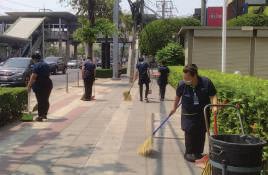
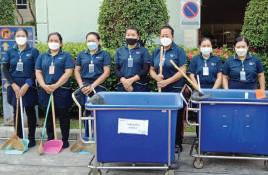
3
Activities to promote staffs’ quality of life during COVID-19
3.1 Provided disaster relief packages to 738 community service staffs during the COVID-19 pandemic monitoring period.
3.2 Donated 75% portable alcohol spray, total 3,000 sets.
3.3 Provided AstraZeneca vaccination against COVID-19 for 2,312 community service staffs.
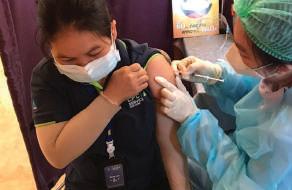
4
Encourage staffs to commit merit deeds
The Company supports and appreciates community service staffs who commit good deeds by finding lost properties and returning them to the original owner and helping residents in Lumpini communities. In this year, community service staffs have committed merit deeds for 51 times (an increase of 2 percent compared to 2021) (accumulated data from January - December 2022).
5
Promote and create happiness for community service staffs
5.1 Saving Promotion Project
It is a project that encourages employees to accumulate saving by allowing employees who voluntarily join the project to open a savings account from 100 THB onwards. The saving would be deducted from their salaries. Upon completing deposits for 12 months, the Company would contribute an additional 600 THB per time, by depositing into the employee’s account once a year. In 2022, there were 181 staffs participating in the project. The Company made total contribution by 108,600 THB.
5.2 Same Family Project
In order to reduce the cost of living and create good relationships between staffs in each project, the Company therefore gave 5,250 bags of rice to community service staffs in the project.
5.3 Influenza Vaccination Program
In 2022, the Company provided influenza vaccination for staffs and facilitate nursing teams to visit and administer vaccines to staffs in 17 work zones. A total of 2,500 employees received vaccination.
5.4 Interest-free loan program for consumers
Due to current economic situation and increase in consumer goods and the cost of living, community service staffs have to bear more expenses. The company therefore provides financial assistance to employees in the form of interest-free loans in order to reduce the problem of taking loan from unlicensed money lender. The project started in February 2022 for staffs who have been working for 1 month or more, granting a loan of 3,000 THB per person. There was a total of 127 staffs participating in the project, taking a loan of 81,000 THB.
6 Production of microbial fermented water
The Company has educated community service staffs to learn how to produce microbial fermented water for cleaning activities within the project. In 2022, the production of microbial fermented water increased by 1 percent compared to 2021 (accumulated data from JanuaryDecember 2022).
LPC’s not-for-profit operations have been focused on helping societies for many years. Thus, LPC has created Social Enterprise Standard Checklists (22 lists) to increase the efficiency of the operations. Social Enterprise Standard Checklists are divided into 2 categories as follows:
Category 1
Qualifications of “Social Enterprise” which consist of 5 sub-categories as follows:
1) Social objectives identification (3 items) 2) Major income (1 item) 3) Fair employment system and policy (4 items) 4) Social-friendly operational process (3 items)
5) Profit management (3 items)
Category 2
Responsibility for the impact on the stakeholders of the social enterprise which consists of 1 subcategory, namely the quality of life of community service staff (8 items)
In 2022, LPC completes 20 checklist items (out of 22 items) on Social Enterprise Standard Checklists. One item has not been done since it is during the process of updating online and offline courses.
Summary of Performance
1. Employment of the underprivileged
2. Donation of profit after expenses to non-profit organizations or social activities
3. No dividend paid to shareholders
4. Major income coming from sales of products or services
5. Recruitment of underprivileged women from surrounding communities and provincial areas
6. Paying a higher wage than required by law (Minimum wage: 388 baht)
7. Providing more welfare benefits than required by law (Two welfare benefits as required by law are the minimum wage and the compensation fund of the Social Security Office.)
8. Putting happiness before profits
9. EM production to reduce chemical uses
10. Community waste segregation
11. Encouraging employees to be socially and
responsible by
by
Cleaning Clinic
The COVID-19 pandemic crisis in the past 2 years has resulted in New Normal lifestyle that requires social distancing and refrains from social gathering to reduce the spread of COVID-19 and reduce the risk of infection. In 2022, LPC initiated a project to promote learning and development of cleaning services. With the introduction of present technology and convenience as a tool according to the Digital Transformation policy under the belief that there is no obstacle to learning and ability to develop knowledge anywhere and anytime.
The project was initiated from the One Page Project. It was because during COVID-19 pandemic, it was not possible to provide cleaning services. Therefore, the Company included summary of cleaning works of project area in learning materials that can be read and viewed within the project and used as working standard for staffs and housewives of Lumpini projects.
Later, the Company applied technology developed from One Page project to One Clip project, which consists of learning via video media or clip such as Youtube or Tiktok that have been earning more popularity and easy to understand. The Company has produced video clips about cleaning and stain removal techniques which are demonstrated by experts or staffs specialized in this field. The video clips will be effective teaching tools that can share knowledge in anyplace and anytime, enabling people to do the works more professionally, increase staffs’ self-esteems and gain new knowledge for staffs and general public. The media has been quickly disseminated in the project areas via Online and LPC Friend channels.
Cleaning Clinic by LPC
It is a project to create a room for consultation and dissemination of cleaning knowledge by experts. The head housekeepers are required to attend the session for 1 hour once a month to share experiences and problems encountered in the project area, such as problems regarding cleaning of oil stains that are difficult to be removed. The consultants will work together to determine methods, techniques, and appropriate cleaning agents that have been correctly analyzed and tested to reduce damages caused by surface cleaning. Staffs will report results of the consultation in the following week session to keep the information for future work.
In 2022, the above operations have been summarized as a body of knowledge “3 common stains that are found in every project!”, and was made into a teaching video clip which summarizes solutions to stains that are frequently encountered in service works. After viewing the video clip, staffs can apply the techniques in their works immediately.
97 percent of staffs in more than 200 projects under LPN’s management was satisfied with the establishment of Cleaning Clinic because staffs can learn new knowledge conveniently via Smart Phone devices, reduce complicated steps, enable them to work efficiently, and reduce complaints on cleanliness. Due to the success, the Company has set a goal to carry out the “On-site Cleaning Clinic” project in the future.
LPN Academy
Under the environmental and social responsibilities, LPN also places importance on continuous personnel development and build on people excellence so that staffs can apply their knowledge and skills to create value for themselves and the organization. In addition to develop personnel of the organization, LPN Academy also has a policy to share knowledge and experience to external organization as well.
After the COVID-19 epidemic crisis began to alleviate, LPN Academy has held training sessions as usual, including off-site and promoting online training, which is in line with the organization’s policy to adopt digital transformation and focus on promoting self-learning for staffs to have more channels and learning formations.
Meanwhile, the Company also emphasizes on competency -based development to continuously enhance the potential of personnel, in both knowledge and skill aspects and characteristics or attitudes as expected by the organization. Personnel competency would be assessed as in the previous year to measure individual behavior that reflects competency of each aspect. The assessment results would be applied in Individual Development Plan (IDP) and tools that supervisors can use for team development plan. The development of personnel competency consists of 3 aspects as follows:
Core Competency CLASSIC (7 topics)
Functional Competency
1 2
Core Competency Development (C-L-A-S-S-I-C)
refers to the development of knowledge, skills and qualifications that everyone in the organization should have. Such knowledge, skills and qualifications are regularly reviewed and staff are encouraged to apply what they learn to their everyday work. The assessment has also continuously been done to build the traits that will support the organization to achieve its goal, mission and vision.
Leadership Competency Leadership (7 topics)
Functional Competency Development
refers to the development of knowledge, skills and qualifications that staff in each department should have so that they can perform their duties and responsibilities in their line of work to achieve the target.
3
Leadership Competency Development
refers to the development of management knowledge, skills and qualifications that are necessary for staff at executive and managerial level who are responsible for work management and team management.
In addition to the three aspects of Competency-Based Development mentioned above, LPN Academy sets annual targets of 56 training hours per staff. The result in 2022 showed that staff had undergone averagely 56 training hours per person, which is higher than targeted. The total number of staff being trained in 2022 was 2,053 persons: 960 male staff and 1,093 female staff.
LPN Academy sets annual targets of
56 training hours per person
The result in 2022 showed that staff had undergone averagely
52.70 training hours per person
The total number of staff being trained in 2022 was 2,053 persons
960
LPN Academy designs training courses that are suitable to staff positions and practical for actual use. The Academy offers training for LPN staff, staff of subsidiaries and staff members of the LPN Team. LPN staff training courses can be categorized into four types as follows:
1
This informative training is organized for the staff to understand and follow the Company’s core corporate principle such as LPN Way, Code of Conduct, LPN Services Culture, LPN Business Practice Platform (3-6-8-10) and social responsibility, etc.
2
1 2 Core Course Functional Course Managerial Course
The course focuses on the development of knowledge, skills, management and coaching such as Team Leaders Excellence, Staff Service Evaluation System, English for Communication, Team Leader Excellence, etc.
External Training Course Core Course Managerial Course Funcional Course External Training Course
This training aims to develop skills, knowledge and operating skills. The weakness and strength in the previous year’s operational performance, along with the important knowledge and skills in the professional practice, are analyzed. The training course is designed for each type of work i.e. Sale-Transfer Business, Project Management, Community Management, Maintenance Work, Brokerage Business, and Support Function.
3 4
The Company sends staff and staff of subsidiaries to attend external training courses to gain additional knowledge. The staff can adapt it to LPN Way for further development of their works.
Development and Training Results
After adjusting the form of training, learning and teaching according to the digital transformation technology policy, it was found that, in addition to create convenient learning method to suit the epidemic situation, the Company and employees also receive other indirect benefits from this adjustment. In line with its overall policy, the Company applies Make It Simple measure which allow all stakeholders to consider their actions and reduce resource exploitation, process and time while maintaining the quality of works and personnel. The satisfaction survey results showed that more than 80 percent of organizers, trainers and trainees were satisfied with online training format.
Details of Staff Training in 2022
LPN Staff Training
1. Managerial Courses
consist of 9 courses as follows:
Table : Details of Managerial Courses
2. Skill Develoment Courses for Staff
There are 35 functional courses categorized according
Table: Details of Skill Development Courses (Functional Courses)
Introduction to Community Administration Law
Announcement Writing for Project Communication, Batch 1
Annual Plan: Powerful Tool for Community Administration Tasks
Prospect Service Development System
CM New Staff Role of Building Resource Management and Compliance with the JCI, 7th Edition Knowledge Sharing: Simple Community
Prepare community service personnel (outside project)
Orientation for community service personnel
Scrub, clean, remove wax and varnish the floors
WI knowledge of cleaning work
Surface restoration and maintenance of stone and tile floors.
Use of floor scrubbing equipment (small floor scrubber)
Waste segregation, equipment and chemical control management
3. Skill Development Courses for Staff (External Training Courses)
Table: Details of Skill Development Courses for Staff (External Training Courses)
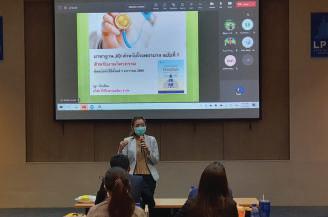
Welcoming Delegates
In addition to provide training for LPN staffs, staffs of affiliated companies and LPN Team, LPN Academy also had the opportunity to welcome a delegate from Bangkok Christian College to attend a seminar on the topic “Facility Management & Personnel Development Guidelines” on June 24, 2022 at Lumpini Tower, LPN Academy (CTH) and delegate from the Faculty of Architecture, Chiang Mai University in a seminar on the topic “Building, Usable Area Plan, Building System Design Concepts” on July 7, 2022 at Lumpini Place Taopoon Interchange.
Table : Welcoming Delegates and Sharing Knowledge to External Organizations
2 4
Welcoming delegates in a seminar on the topic “Facility Management & Personnel Development Guidelines”
Welcoming delegates in a seminar on the topic “Building, Usable Area Plan, Building System Design Concepts”
Mr. Thamrongphol Daengbubpha and Mr. Suphat Pongchotipibul
Mr. Nattakarn Muangsrichan Khun Piyathida Thitiyingthavorn Khun Theerathorn Suprarop Khun Sakarn Aphibunsuwan Khun Kampanat Thongthip and the project team
Bangkok Christian College, 10 persons
Faculty of Architecture, Chiang Mai University, 65 persons
• Welcoming delegates in a seminar on the topic “Facility Management & Personnel Development Guidelines”

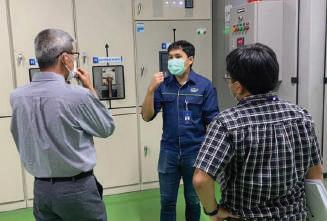
• Welcoming delegates in a seminar on the topic “Building, Usable Area Plan, Building System Design Concepts”
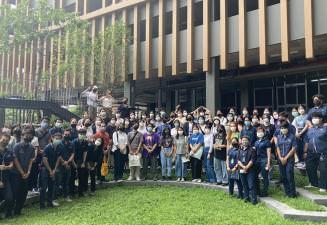
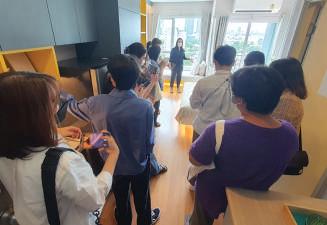
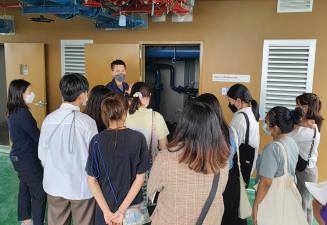
Sharing Knowledge to External Organizations
In 2022, LPN has shared knowledge and experience to external organizations after the government began to relax the COVID-19 preventive measures. In this regard, Mr. Thamrongphol Daengbubpha, Assistant Managing Director, Mr. Prapansak Rakchaiwan, Managing Director of Lumpini Wisdom and Solutions Co., Ltd. and Miss Suratsawadee Suewacha, Managing Director of LPC Social Enterprise Co., Ltd. jointly shared their knowledge.
Table : Executives shared their experiences with external organizations
1
1 4 4
“Facility management & Property Management” for graduate students in the Master of Architecture Program and part-time students in the Master of Science Program, Chulalongkorn University
Utilization of research results in business development planning, a case study of LPN Development PLC Faculty of Architecture, Chulalongkorn University
“LPC Social Enterprise Co., Ltd.” improves the quality of life, creates sustainable happiness for underprivileged women, undergraduate student of Srinakharinwirot University
“LPC Social Enterprise Co., Ltd.” improves the quality of life, creates sustainable happiness for underprivileged women (group interview), graduate students of Department of Development and Sustainability, the School of Environment, Resources and Development, Asian Institute of Technology
Budget for Employee Training and Seminars
Mr. Thamrongphol Daengbubpha
Miss Suratsawadee Suewacha Mr. Prapansak Rakchaiwan
Miss Suratsawadee Suewacha
Therefore, in 2022, the Company allocated budget for implementation of training development and seminars via LPN Academy in the total amount of 8,485,832 baht with the following details:
Training center costs
Internal training costs
5,241,832 THB
2,821,719 THB
External training costs 422,281 THB
The average training cost per person for the entire organization is 4,132 baht per person.
L.P.N. Development PCL has given importance to the innovation development and promotes an atmosphere to foster innovation in all operational processes. “Lateral thinking” is identified as one of the core competencies of the organization that will motivate new innovative creations of products and services of the organization. The innovative operation of the Company can be categorized into three levels as follows:
2 3 INNOVATION DEVELOPMENT 1
Strategic Innovation Product Innovation Process Innovation
is the innovation that supports the vision and strategy of the organization e.g., Digital Transformation, development of Livable Home concept, Virtual Reality (VR). The Company has applied Digital Transform to facilitate employees to work from home. It also increases efficiency of the expense and cost management and improves the internal organization management to suit today’s growing digital era such as applying more sales technology and touchless 3D-visual or VR tours of a project.
is the innovation that adds value to a product, e.g., designing projects according to Green Building Standards, developing condominium units and residential homes that promote well-being of residents or applying Smart Living Technology with sustainable development concepts, to ensure that the Company’s products and services best meet customer needs. The Company uses the Design Thinking process in combination with Big Data and customer feedback to develop products and services that can meet their needs, create a good customer experience, and accurately improve the issues that cause both current and next-generation customers dissatisfaction, such as EV chargers for residents’ electric cars and solar PV on rooftop of sales offices as a renewable energy source.
is the implementation of a significantly improved operating process or provision of services to enhance team efficiency and increase Service Excellence in order to meet customer needs and continually up-level the work. In 2022 the Company has focused on developing work processes to complement diverse lifestyles of its residents through the development of digital transformation services to reduce mistakes at work and labor consumption, such as organizing project management data on Connect Dashboard, managing workflow with QR Auto Report, using QR technology to track maintenance works, providing Aircon Saver, a Smart Living Technology, for residents.
Model Units - 3D Virtual Solution
Year 2022 was the year which the Company continued to use digital technologies to support its marketing and sales. One of them was virtual reality (VR) technology which became significant after COVID-19 situations. The Company adapted to offer a new touchless experience through 360ํ 3D virtual tours of its properties. The pilot test of the tour started in 2021 and it would be widely used in 2022 in sales offices and online sales of “168” properties, new projects of LPN group. This application of digital transformation responds to the needs for convenience and modernity of new generations. The virtual tour can be done anytime (24 hours) from anywhere.
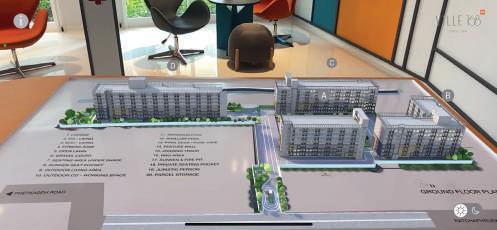
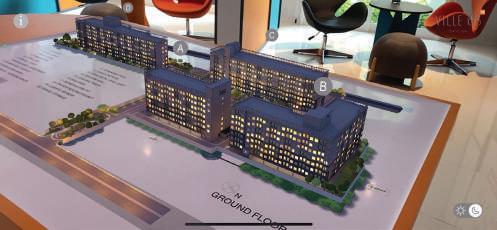
(Examples of 3D virtual displays of Park 168 Onnut Project)
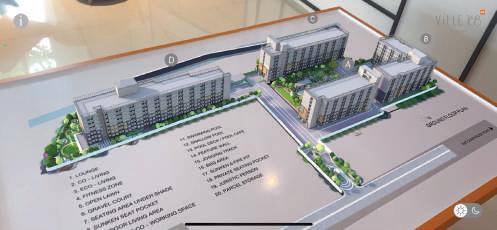
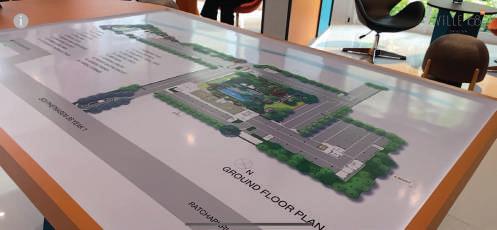
Customers can use their smartphones to scan the QR code from web page, e-brochure or a sign posted in front of sales offices. Then, the 3D Virtual system will display model units in 3D allowing customers to switch perspective from 2D to 3D to make the images of both room design and interior design of the model units more realistic and beautiful in response to the living concept of customers who want to see images that approximate reality. In addition, it enables the Company to collect data for more accurate analysis for the improvement of sales operation and to reduce construction costs, labor costs and product and service development costs to meet diverse customers’ needs and demand for greater speed in this era.
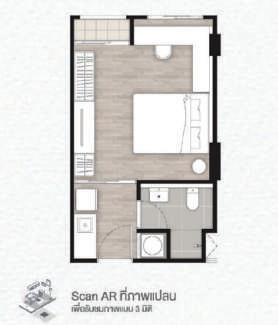
ABOUT L.P.N.
Company Name : L.P.N. Development Public Co., Ltd.
Type of Business : Listed company in the Stock Exchange of Thailand
Stock Symbol : LPN
Registration Date : 21 June 1989
Registered Capital : 1,454,198,768 THB
Registration Number : 0107537002303
Country of Operation : Thailand
Head Office : 1168/109, 36th Floor, Lumpini Tower, Rama 4 Road, Tungmahamek sub-district, Sathorn, Bangkok 10120
Contact Number : Tel. 02-689-6888
Website : www.lpn.co.th
Type of Business Operation and Affiliated Companies
Real Estate Developer Service Provider
L.P.N. Development Public Co., Ltd. (LPN)
Develop residential condominium.
Pornsanti Co., Ltd. (PST)
Develop real estate projects other than residential condominium.
Lumpini Property Management Co., Ltd. (LPP)
Provide comprehensive community management service.
Lumpini Project Management Service Co., Ltd. (LPS)
Provide comprehensive real estate development service.
LSS Solution Security Guard Co., Ltd. (LSS)
A business providing comprehensive security services.
LPC Social Enterprise Co., Ltd. (LPC)
Provide community services.
Lumpini Wisdom and Solution Co., Ltd. (LWS)
Provide product and service research and development services in real estate business.
Types of Products
The Company and subsidiary companies conduct businesses in two business groups i.e. real estate development business and real estate related service rendering business. The details are as follows:
Real Estate Development Business 1
L.P.N. Development Public Company Limited operates real estate development business with an aim to sell residential projects targeting middle to lower-middle income earners (Focus Strategy). Since 2017, the target group of customers and the product development have been expanded to include lower-middle to upper income earners. The differentiation strategy in creating uniqueness in terms of products and services is applied. The condominiums units and common area of the projects developed by the Company are developed under “LPN Design” concept which is in accordance with the Principles of Universal Design. The common area is specially designed as a co-living space for the residents of all age groups. Moreover, after-sale service in the form of community management under “Livable Community for All” strategy has been developed. The strategy helps create the uniqueness of the Company and builds confidence among customers.
The Company has identified the position of each product for clarity and to cover the Company’s target group. The products of the Company are categorized by objectives into two groups, namely, the urban residential condominium and vacation condominium project and the residential home project. In 2022, the Company launched a new master brand “168” to modernize brand image and products in response to the needs of new generations. The new brand comprises mid-to high-end residential condominium projects and residential home projects at various price levels.
1.1
The urban residential condominium:
Apart from developing residential condominiums in Bangkok and peripheral area, since 2012 the Company has also developed projects in other provinces i.e. Chonburi, Udonthani, Phetchaburi and Pattaya. The brand positioning is as follows:
1) “The Lumpini”
It is the premium brand developed for the special occasion of the 24th year of operation of the Company. The project is located on the highest potential location in Soi Sukhumvit 24 surrounded by convenient facilities. The Lumpini is perfect for luxurious, high class living reflecting the success of a superior life.
2) “Lumpini Suite”
It is the high-end brand developed in response to residential needs of business owners or high-ranking executives who are in search of aesthetic life that is simple and yet luxurious. The location for the development of such projects, therefore, is in central business district near major transportation systems such as BTS and MRT stations and major expressways. The project is fully equipped with amenities. The number of units is minimal so the residents are able to enjoy the privacy.
3) “The Selected by L.P.N.”
It is the mid-to-high-end brand whose product value is developed to match the unique lifestyle of target groups in each project. The first project development is located opposite to Kasetsart University. Therefore, the project is developed as a campus condominium. The design of common areas is perfect for studying i.e. spaces for group working, quiet reading corners and areas for brainstorming, exercising, and outdoor activities.
4) “Lumpini Place”
It is the mid-to-high-end brand developed for the working-age target group. The project location is in densely populated area and near main streets. It may be in or around central business districts and is conveniently located near modern transportation system. The project is fully equipped with technologies and amenities for everyday living. “Lumpini Place” is the model of City Condo along BTS and MRT route with the price of around one million THB developed by the Company since 2001. It was initiated under “LPN Design” concept which focuses on the functionality of space. City Condo projects are successful and positively received by the customers since it meets the needs of the working people in the city.
5) “Lumpini Park”
It is the mid-to-high-end brand developed for large-scale community. “Suan Ruam Jai,” a community park which is a green and shady area where family members and residents of the projects can do activities together, is initiated to add value to the product and service. It is in line with the concept of creating a “Livable community” in which residents live together in harmony under “Togetherness, Care and Share” culture. The first project is Lumpini Park Pinklao.
6) “Lumpini Ville”
It is a mid-end brand developed from “Lumpini Place” for professionals looking for their first private homes for the convenience in transportation and privacy. The project is located in densely populated area and near workplace and convenient facilities such as department stores, schools, etc. “Lumpini Ville” brand is thus an alternative for young people who want to live a life of their own while still maintaining a close bond with their family.
7) “Lumpini CondoTown”
It is the mid-to-low-end brand focusing on building a residence for a great quality of life of those who just start their career and are freelancers. The locations of the projects will be in the fringe of urban-outer area which is densely populated. This is a large group of people who are in need of a residence. It is to be the first quality home and the starting point for those who are about to start their lives and build a happy family.
8) “Lumpini Township”
It is the large-scale, mid-to-low-end brand developed to create an opportunity of owning a home at an affordable price. The “Livable Township” strategy is initiated for middle-and lower-income groups. The first project with over 10,000 units is developed on a 100-rai plot of land is “Lumpini Township Rangsit-Klong 1. The project is fully equipped with convenient facilities such as various recreational areas for a large number of residents, a community mall and convenient stores to enhance the quality of life as well as great environment and society for the residents.
9) “Place 168”
This mid-to high-end brand located in prime business districts is developed as a continuation of the Lumpini Place brand, a prototype of the Company’s City Condominium. Commuting is convenient since projects are either on main road or near major public transportation nodes. Its residential design supports the lifestyles of new-gen urban people. The design of new functions for living moves life forward. Technologies are utilized to make life easier. Spaces for relaxation and work are created in order to fulfill the desire to succeed professionally and personally.
10) “Park 168”
This mid-to high-end brand is developed as a continuation of Lumpini Park brand. Its design emphasizes on living urban life in harmony with nature. Proper technologies are selected in order to create balance in life. Residents can rest in relaxing green atmosphere and dwell in happiness that infiltrates everyday life.
11) “Ville 168”
This mid-end brand is developed as a continuation of Lumpini Ville brand to accommodate the needs for privacy of target groups who want to start their families in their first owned home. It is a home that will recharge your life with positive energy, both energy for work and energy to cope with various things in daily life, and create inspiration. You can release your imagination to enjoy a good rest physically and mentally and design your own days as you wish to rejuvenate your life and make you ready to roll on any day.
1.2 Vacation Condominium Project:
In addition to living in urban area, which is close to workplace and amenities, the Company has initiated the development of a vacation condominium as the second home. The pilot project is firstly developed in Pattaya and then Cha-am in Phetchaburi Province.
1) “Lumpini ParkBeach”
It is the mid-to-high-end brand developed from “Lumpini Park” which combines the atmosphere of Suan Ruam Jai with the liveliness of the seaside atmosphere. The first project developed is Lumpini ParkBeach Jomtien. All the condominium units are designed to have the ocean view. The price is also extremely affordable. Since the project is well-received, the Company has decided to develop another project of the same brand in Cha-am, Petchaburi Province in 2015.
2) “Lumpini Seaview Jomtien”
It is the mid-end brand for professionals who would like to buy a vacation home by the beach. “Lumpini Seaview Jomtien,” is the first project developed in Pattaya, not far from “Lumpini ParkBeach Jomtien” which is the first resort condominium of the Company. It is designed as an affordable vacation home for the customers in the middle-income range who are the main target customers of the Company. The residents can enjoy panoramic view of the ocean. The project is managed under the “Livable Community” concept and provides services that cater to the lifestyle of people who want to stay at a resort style condominium.
1.3 Residential Home Project
In 2011, to build on the customer base, the Company has expanded the scope of project development to middle to lower-middle residential homes and townhouses, applying the strengths of the residential condominium development namely LPN Design, effective cost management and after-sales service according to “Livable Community for All” strategy. In 2017 the Company expanded the development of projects to cover customers who want premium homes. The product position set by the Company is as follows:
1) “BAAN 365”
It is a flagship project of premium single house and townhome of the Company. The location is meticulously selected. The first project is developed on Rama 3 Road as it is right in the city and yet private. It responds to the need of customers with high purchasing power who tend to expand their family and prefer a city home that can accommodate 3 generations under one roof.
2) “Lumpini Townplace”
It is the mid-to-high-end housing brand developed for professionals (35 years older). The Company has selected locations that can be accessed from several routes and are close to amenities making everyday life more perfect. It fits the new normal city lifestyle perfectly. The design of the common area and the body of the house are suitable for living. Materials are of good quality. It improves the quality of life and social quality.
3) “Lumpini Townville”
It is the mid-end housing brands developed to meet the needs of residential condominium customers who want to expand the functional space. It is suitable for professionals 25-35 years of age who want to expand their family due to an increase in family members. The house is designed to meet their needs providing proper space allocation to all members at an affordable price. The interior is very functional with the living room, the kitchen, the bedrooms and the elderly room. The provided common areas such as gardens and clubhouses serve as gathering places for residents allowing them to perform social activities together under the “Togetherness, Care and Share” concept.
4) “Residence 168”
As a new definition of premium home, the Residence 168 brand pays attention to every detail in life. Designed with understanding, it clearly reflects resident’s personalities. It is outstanding, unique and charming and complements every aspect of life at any moment to ensure that this place is the most perfect place for you.
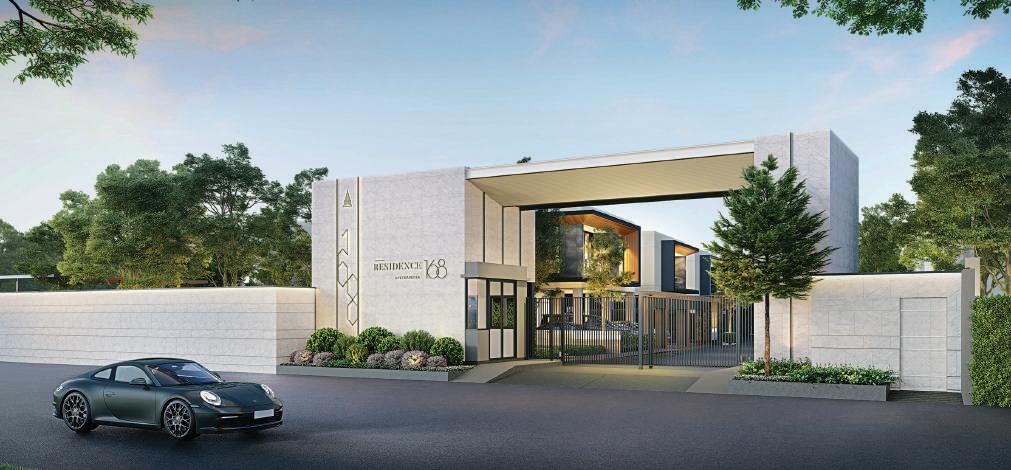
5) “Villa 168”
This is a mid-to high-end resort-style detached-home brand, designed for privacy and for residents to enjoy the best moment. It is suitable for those who want to relax in a quiet, private and resort-like atmosphere, experience a comfort life with no rush and be ready for the best moment that can happen every day.
6) “Maison 168”
This is a mid-to high-end townhome brand developed to perfectly meet lifestyle of people nowadays. The house is simple but airy and full functional.
7) “Haus 168”
This mid-end detached-home brand offer new-generation houses for modern living. It is developed to accommodate small single families, offers privacy and caters to lifestyle that prefers convenient living and working conditions. Each function in the house can be freely adjusted to suit every lifestyle of modern families.
8) “Venue 168”
This mid-to low-end brand is designed according to lifestyle of new-gen urban families which is considered the utmost importance. It caters to needs of anybody looking for a full functional house to start a family. Areas are adjustable which provide flexibility for current and future living.
Real Estate Related Service Rendering Business 2
It is the policy of the Company to provide after-sale services to customers in all projects. Five subsidiary companies are established to provide various services related to property development as follows:
1. LPP Property Management Co., Ltd. (LPP)
For both condominiums and residential homes developed by LPN and provides management service to external projects as follows:
1.1 Community management
It is responsible for community management that focuses on adding value of services delivered after the project is handed over to the customers via “Livable Community” strategy which is developed into “Livable Community for All” strategy. It is to uphold the reputation and value of the projects developed by the Company and residential communities. Professional community management team will manage the property, budget, quality of life, environment, safety and stakeholders such as residents, community management team and condominium juristic person committee under F-B-L-E-S+P strategy.

1.2 Management of residential condominiums, offices and commercial buildings
is responsible for management of common assets and common areas for the sake of building efficiency. It does not only make the building suitable for its use but also take care of operational efficiency under an adequate and suitable environment. Other services include providing management service for rental asset management system, setting up and operating condominium management system and managing office buildings, commercial buildings, superstores or other business buildings as required by clients. In addition to providing building management services and building supervision to ensure the suitability of the building for its uses, the company supervises the operational efficiency under a suitable and worthwhile environment starting from planning, controlling, evaluating, managing database and auditing by personnel and teams who have high experiences in all fields.
1.3 Brokerage services
It focuses on managing residential condominium units that the buyers (investors) wish to rent out or sell. The renters are also carefully selected to ensure the safety of the community.
1.4 Engineering service is responsible for providing comprehensive condominium engineering services according to customers’ needs. The operation includes supervision of the maintenance and repair of condominiums, such as electrical system, sanitation system, fire prevention system, air-conditioning system, building painting work, etc. Work plan and cost control plan are done by our expert and experienced personnel for the highest benefits such as repairing the interior of condominium units, designing and renovating wastewater treatment system and improving M&E system.
2.
Project Management Service Co., Ltd. (LPS)
provides project management service to the Company and subsidiary companies. The company is supported by more than 20 companies in LPN Team. In 2017, the business base is expanded to include service rendering to external organizations. The emphasis is put on project management in order to deliver product values to customers as well as quality management, costs control and management, speed of completion, environmental responsibility and safety of construction workers and related parties under “Q-C-S-E-S+P” strategy. In 2019 the company has achieved ISO 9001:2015 Quality Management System Certification and ISO 14001:2015 Environmental Management System Certification.
3. LSS Solution Security Guard Co., Ltd. (LSS)
is responsible for security services by integrating people and system technology. It focuses on providing services to projects developed by the Company to support the comprehensive community service policy, supervise security performance and maintain the quality of “Livable Community” management. In addition, the company provides comprehensive security services to external projects as well.
4. LPC Social Enterprise Co., Ltd. (LPC)
is responsible for community service works. It provides cleaning services and comprehensive services to both internal projects developed by the Company and external projects. It was originally called Lumpini Property Service and Care Co., Ltd. Established with an aim to create jobs, incomes and dignity to underprivileged women, it has expanded the target groups to persons with disabilities and elderly people. In 2013 the company has been among the first group of companies that were certified as social enterprises by the Department of Social Development and Welfare, Ministry of Social Development and Human Security. Together with LPP, in 2019 the company has achieved ISO 9001:2015 Quality Management System Certification.
5. Lumpini Wisdom and Solution Co., Ltd. (LWS)
is responsible for providing product and service research and development to the Company and subsidiary companies. The company also provides consultation and research services on green operation, sustainable development and Building Information Modeling (B.I.M.) to the Company and other domestic and international organizations outside LPN Group. The achievement of ISO 9001:2015 Quality Management System Certification of the three affiliated companies namely LPP, LPC and LPS has raised the standard of service business, increased competitive potential and built customer confidence in brand. Moreover, it can reduce cost in the long run and reduce work procedure and errors, resulting in decreasing complaints, maintaining of service standard and positive customer perception.
Lumpini
STAKEHOLDER ENGAGEMENT & MATERIALITY ANALYSIS
The Company is able to identify major stakeholders who are involved in different operational processes. It is based on the assessment of the level of their involvement both in terms of their influence that affects the Company and its operation as well as the impacts from the operation of the Company. The level of importance is measured following the guidelines of the Stock Exchange of Thailand (SET), Thai Institute of Directors (IOD) and ASEAN Corporate Governance Scorecard. The treatment, method and frequency of communication and expectation of each group of stakeholder are established as follows:
SHAREHOLDERS
• Respect basic shareholders’ rights in accordance with the law and Articles of Association.
• Treat all stakeholders equally.
• Have a mechanism in place that will ensure shareholders that they will receive accurate information and a sound profit and dividend according to the policy of the Company.
• Monitor connected transactions, determine measures to prevent conflict of interest and prevent the use of internal confidential information for personal benefit.
SUPPLY CHAIN
Business alliances are trade partners of the Company. It is the network of entrepreneurs such as architects, engineers, consultants, construction companies, construction materials manufacturers, transport companies and security services providers.
• Promote collaboration among “alliances” by developing LPN Team which is treated as a subsidiary company of the Company.
• Offer appropriate return, do not exploit trade partners or only take into account the profit of the Company, conduct business based on fairness.
• Set out clear purchasing policy. All trade partners must submit a cost proposal and the Company will select the one with fair and reasonable price and high-quality services based on the purchasing guideline of the Company.
STAFF
• Treat staff with fairness in regard to career opportunity, remuneration and appointment or transfer, all of which should correspond to the performance of each staff and business success of the Company.
• Establish a short-term structure of remuneration of staff which is decided from the profit of the Company and the staff’s contribution to the success of the Company each year.
• Consider the overall remuneration of staff based on Key Performance Indicators (KPIs). The remuneration rate must be in accordance with the market rate. The knowledge, ability, experience and performance of each staff will be taken into account, as well as equality and fairness, inflation rate and Gross Domestic Product.
• Offer annual bonus based on the annual performance of the Company.
• Provide welfares e.g. health insurance, annual medical check-up, provident fund, financial loan, financial aid in case of death of staff’s parents or spouse and fitness area.
• Promote work-life balance of staff and regular workplace inspection. Provide safety equipment to staff and organize fire drills.
CUSTOMER
• Give importance to and be responsible for all customers on a regular basis. Enhance customers’ satisfaction and confidence, develop products, be liable for the quality and standard of products as promised, improve customer service quality and maintain customer confidentiality.
• Establish a Call Center and Customer Experience Management Department Tel. 02-689-6888 to receive complaints.
Stakeholder (8S)
Treatment of Stakeholder
Concern and Expectation
• Generate appropriate growth and profit.
• Take environmental and social responsibilities.
• Generate a balanced return for all stakeholders.
• Adhere to corporate governance principles.
• Manage risks.
• Act against corruption.
• Respect shareholders’ right.
• Implement 6 GREEN LPN policy to achieve sustainable development.
• Promote unity.
• Establish a joint business plan.
• Share knowledge.
• Generate a balanced return.
• Support organizational development process of trade partners.
• Build environmental and social awareness to mutually achieve growth and development.
• Promote work-life balance.
• Promote learning and career advancement.
• Promote “Livable Organization” concept and happiness at work.
• Build capacity and promote organization values.
• Provide appropriate remuneration and welfare.
• Promote equality and basic rights.
Method of Promoting Participation Frequency
• Annual Report and Sustainable Development Report
• Annual General Meeting of Shareholders
• Shareholders’ Newsletter
• Project visit
• Meeting with analysts
• Meeting with Investors and Fund Managers
• Project progress report
• Meeting with LPN Team (Executive Level)
• Meeting with LPN Team (Operational Level)
• Training and knowledge sharing
• Relationship building activities
• Happiness at Work Survey
• LPN Academy
• Activities promoting participation
• Staff Relations Team
• Performance Evaluation
• Internet website and email
• Executive Knowledge Sharing
• Welfare Committee
• WhatsApp / Line OA
• Build affordable home with appropriate and fair price.
• Promote product and service value and brand’s credibility.
• Enhance customers’ satisfaction and manage complaints.
• Respect consumers’ rights.
• Call Center
• Various activities
• Satisfaction Survey
• Lumpini Family Day
• Touchpoint
• Customer Experience Management
• Market Research
• www.lpn.co.th
• Line OA
Stakeholder (8S)
RESIDENTS
Treatment of Stakeholder
• Enhance the quality of life and build good relationship with residents through various activities on a regular basis.
LABORS
NEIGHBORS
• Enhance the quality of life of construction workers and provide necessities of life such as food and sanitation. Accommodation of construction workers in construction sites is inspected to ensure the cleanliness and tidiness of the site and provide assistance if needs be. Various activities are regularly organized, for example,
- Provision of free haircut and lunch to construction workers.
- Drug test.
- Monitoring the amount of waste at the site for proper waste management.
- First aid training and training on medicine use.
- Annual medical check-up and vaccination.
• Monitor the environmental quality in construction sites.
• Manage wastewater and waste in Lumpini communities.
ENVIRONMENT
• Establish a clear policy and guideline to build awareness of staff, trade partners and communities managed by the Company.
• Appoint a Corporate Environmental and Social Responsibility Committee to monitor the operation and ensure that it is in line with the policy. A Charter is to be established. Crucial operational processes are to be supervised by high-ranking executives.
• Apply the Triple Bottom Line (3P- Profit, Planet, People) approach in the operation, establish 3-6-8-10 guideline i.e. 6 GREEN LPN, 8 Stakeholders, 10 Processes and emphasize CESR In Process. The concept of 6 GREEN LPN includes the six areas of environmental and social responsibilities as follows:
1. Green Enterprise
2. Green Design Concept
3. Green Financial Management
4. Green Marketing Management
5. Green Construction Process
6. Green Community Management
• Regularly organize CESR Out Process activities.
Concern and Expectation
• Promote product and service value.
• Enhance customers’ satisfaction and manage complaints.
• Respect consumers’ rights.
• Promote “care and share” culture.
• Promote participation in CESR activities.
• Promote learning among youth residents.
• Provide an opportunity for the residents to decide the guidelines for management of community.
Method of Promoting Participation
• Annual General Meeting of Joint Owners
• Mobile App
• Call Center
• Various activities
• Satisfaction Survey
• Lumpini Family Day
• Chairman of Juristic Persons Seminar
• Touchpoint
• Customer Experience Management
• Market Research
• www.lpn.co.th
• Line OA
• Ensure safety at work.
• Enhance the quality of life and sanitation of construction workers.
• Offer standard remuneration rate and respect basic rights.
• Treat all workers equally.
• QCSES+P
• Activities promoting the quality of life of construction workers
• Medical check-up
• Minimize noise, dust and impacts from construction.
• Be open to suggestions.
• Comply with the Environmental Impact Assessment Report.
• Take sustainability of the neighboring area into consideration in project design.
• Public Hearing
• Visiting, Meeting, Discussing
• Increase of Green Space
• Space Improvement
• Sustainable Project Design
• Suggestion Box
• Minimize construction impacts.
• Campaign for waste segregation in communities managed by the Company.
• Promote energy conservation.
• Use resources efficiently.
• Promote sustainable project design.
• Raise CESR awareness in communities managed by the Company.
• Create jobs and enhance quality of life of underprivileged women.
• Share knowledge with other organizations via LPN Academy.
• 6 GREEN LPN
• LPN Green Signature Project
• QCSES+P
ABOUT THIS REPORT
Report Preparation Guideline
Sustainable Development Report 2022 is the sixth sustainable development report of L.P.N. Development Public Co., Ltd. The first one was published in 2014 to monitor and disclose the information on the positive and negative impacts of the operation of the organization on the economy, environment and society. It also aims to disseminate the concept of business operation of the Company which is based on sustainable development as well as the Philosophy of Sufficiency Economy i.e. moderation, reasonableness and self-immunity together with Knowledge and Morality as reflected in 6 Green LPN management concept.
The information included in the Report is compiled between 1 January and 31 December 2022. The preparation of the content of the Report, particularly the general information of the organization, management guideline and operational key performance indicators, is in conformity with the Global Reporting Initiative Standard (GRI Standard): Core Option which is different from the previous year report that used GRI - G4 version. The linkage between the business operation of the organization and the Global Sustainable Development Goals 2030 (SDG2030) is also presented in this Report.
Defining Report Content and Boundary
The reporting framework and content is defined mainly upon the significance and benefit of the content. Material sustainability aspect is assessed along with sustainability context, stakeholder inclusiveness and completeness of the content in accordance with GRI Sustainability Reporting Guidelines.
Identifying Sustainability Topics
A number of sustainability topics have been identified in the Sustainability Report 2022, all of which are relevant to real estate development and construction industry and substantively influence the expectation, assessment and decision of stakeholders on the organization’s responsible operation. Sustainability aspects will be assessed following the GRI Sustainability Reporting Guidelines.
Furthermore, the considered sustainability aspects are being reconsidered. Feedback from each stakeholders, operational guidelines and sustainability assessments by different agencies are taken into consideration together with other existing aspects so that the consideration for significant aspects in 2022 are more completed.
Prioritizing Material Aspects
After defining the topics relevant to the operation on sustainability of the Company, the working group prioritized the topics based on the influence on stakeholders’ assessments and decisions as well as the significance of economic, environmental and social impacts in order to determine the “materiality” of the report.
Validating Material Aspects
The working group proposed the sustainability topics to the Chairman of the Board of Directors, the highest-ranking executive of the organization, for endorsement so as to ensure that such topics are inclusive of possible impacts of the Company’s operation and are of importance to each group of stakeholders. The topics will be used as a guideline for the planning of sustainable operation and preparation of the Sustainability Report. The materiality of the report is identified and shown in the diagram on prioritizing materiality aspects in accordance with the analysis of the Company Materiality Aspects in page 118. Reviewing
The Company made use of the feedback of the stakeholders on the Sustainability Report 2021 to develop the Sustainability Report 2022. The contents are reviewed whether they are relevant to the sustainability topic of the organization so that the operation of the Company achieves sustainable development goals that are most relevant and significant to the organization. In addition, the feedback is used to determine the direction of socially responsible operation of the organization in the next phase. In 2022, stakeholders are able to send their feedback and suggestions on sustainable and responsible operation through a number of channels provided by the Company as well as the attached questionnaire.
LPN’S MATERIALITY MATRIX
Resources management (material, energy, water, and effluence & waste)
Stakeholders grievance mechanism
Employment, training and education, and occupational health and safety
Customer health and safety
Supplier human rights practices
Marketing communication and dissemination of information to customers
Dissemination Channels
• Website: http://www.lpn.co.th: “Sustainability Report” in “Good Corporate Governance” under “Investor Relations”
• 50 printed copies (Thai version) and 20 printed copies (English version)
Contact Person for the Preparation of Sustainability Report and Sustainable Operation
Ms. Monnaphat Suphakitchanusan Brand Development Department, Brand Management Division
L.P.N. Development Public Co., Ltd. 1168/109 Lumpini Tower, 36th Floor, Rama 4 Road, Thung Maha Mek, Sathorn, Bangkok 10120
Tel : 02-285-5011-6
Email : bnd@lpn.co.th
Fax : 02-285-5017
STAFF INFORMATION
Note : Percentage of total number of employees categorized by types of contracts
Number of staff by age and level
Operational Change Statistics (person)
Number and Proportion of Welfare Communittee
Note : **Since the number of staff of Pornsanti Co., Ltd. is less than the minimum number required by the Labor Protection Act, the company does not have any representative in the Welfare Committee. The term of service of the committee members is 2 years from 28 November 2020 to 27 November 2022.
Maternity Leave
that returned to work in the reporting period after maternity leave ended
Number of employees that returned to work after maternity leave ended that were still employed 1 year after their return to work
Return to work rates of employees that took maternity leave
Retention rates of employees that took maternity leave
Note : 1 Return-to-work Rate = (Number of employees that returned to work after the maternity leave ended/Number of employees that took maternity leave by gender) x100
2 Retention Rate = (Number of employees that returned to work after maternity leave ended that were still employed 1 year after their return to work/Number of employees that returned to work in the reporting period after maternity leave ended) x 100
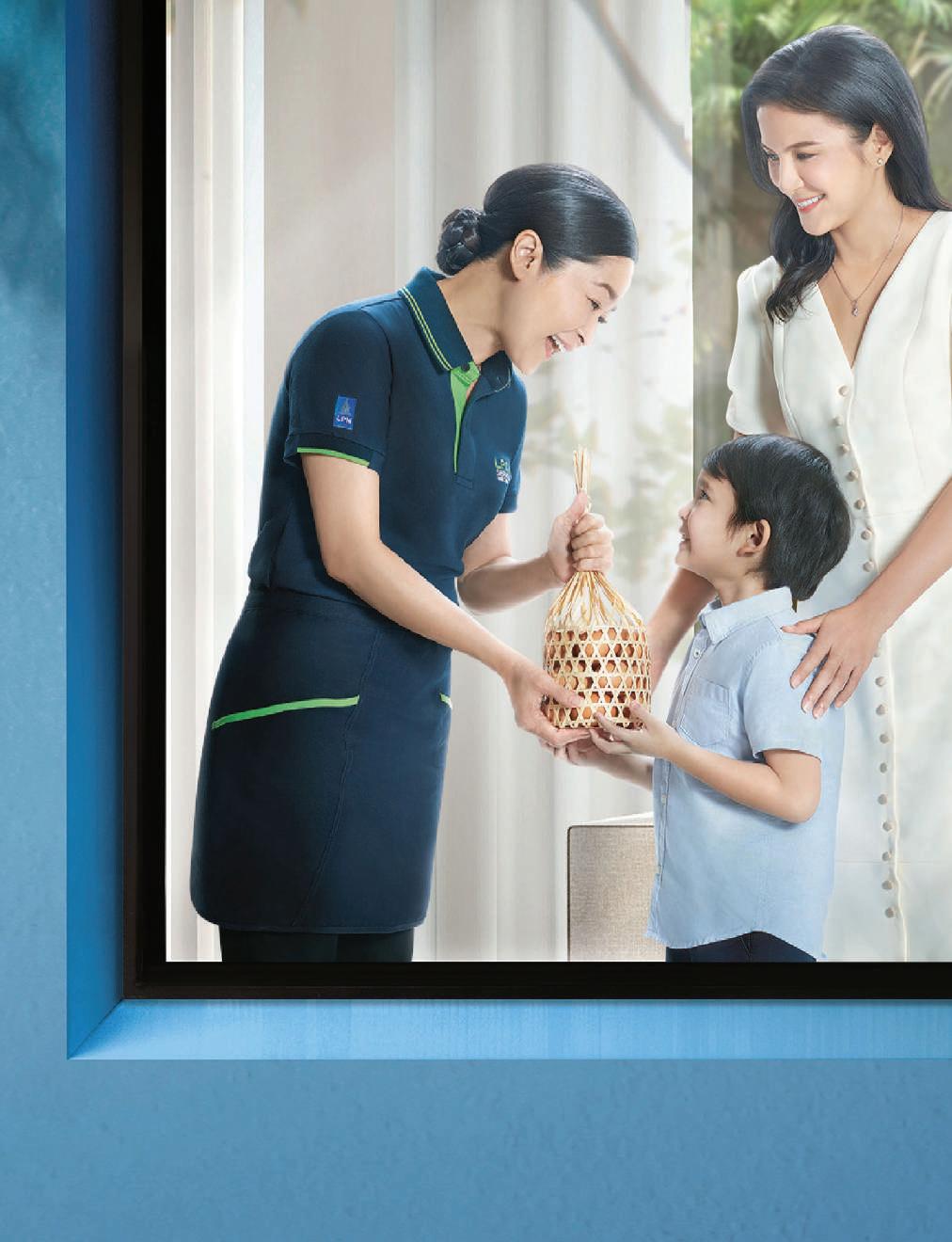
Satisfaction Survey Form for the Readers of Sustainability Report of L.P.N. Development Public Co., Ltd.
Section 1: General Information
1.1 Relationship with the Company
Shareholder Staff Customer
Joint Owner/ Resident Trade Partner Investor
1.2 Have you ever read a Sustainability Report of the Company before?
Yes No
Section 2: Report Content and Presentation
2.1 Your awareness and understanding of the overall operation of the Company is increased.
2.2 Your awareness and understanding of the operation on sustainability of the Company is increased.
2.3 The content of the Report reflects important operations of the Company as expected.
2.4 The content is clear.
2.5 The content is easy to read and understand.
2.6 The content is useful.
2.7 The report layout is beautiful
2.8 Overall, you are satisfied with the Report.
Section 3: Sustainability Reporting Improvement
3.1 This Report addresses the issues that are of your interest.
Commercial or Financial Institution
General Public
3.2 Other comments or suggestions Agree Disagree
Please submit the form to:
Department of Brand Development
L.P.N. Development Public Co., Ltd.
Address : 1168/109, 36th Floor, Lumpini Tower, Rama 4 Road, Tungmahamek sub-district, Sathorn, Bangkok 10120
Email : bnd@lpn.co.th Strongly Agree
Yes No (please specify the issues that you are interested in and should be included in the next Sustainability Report.)
Your comments and suggestions are valuable for the sustainable development of the Company. Thank you very much for your cooperation.
